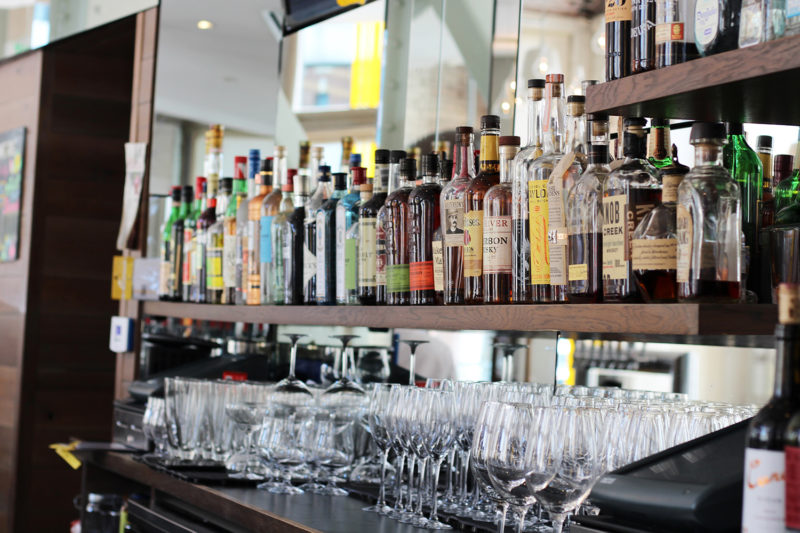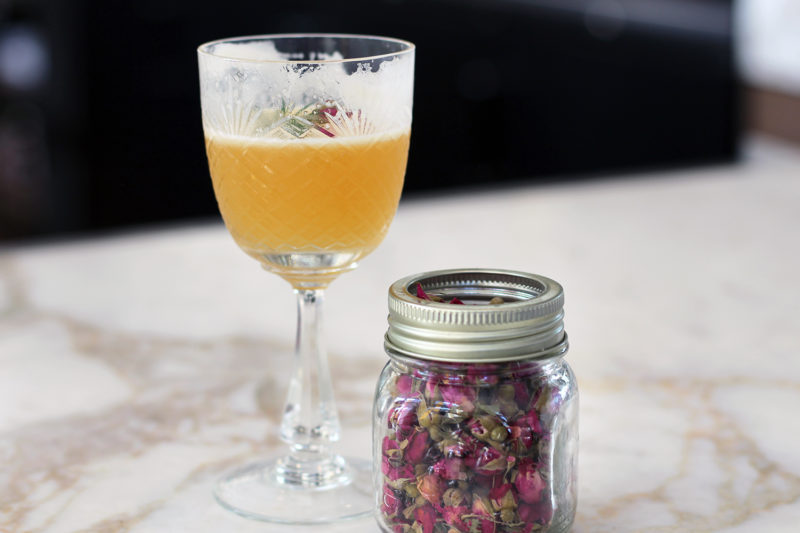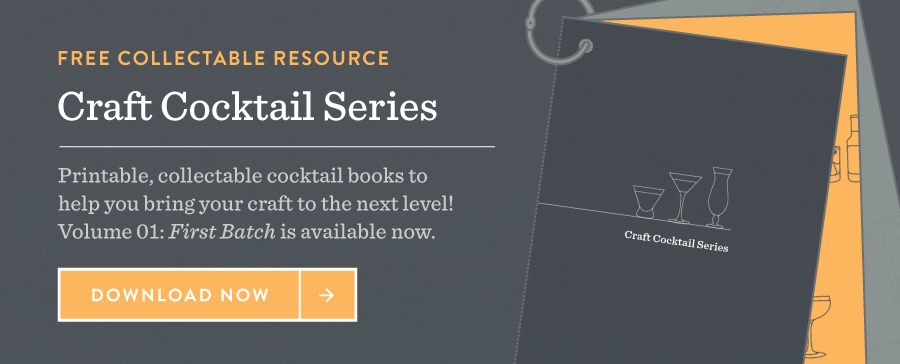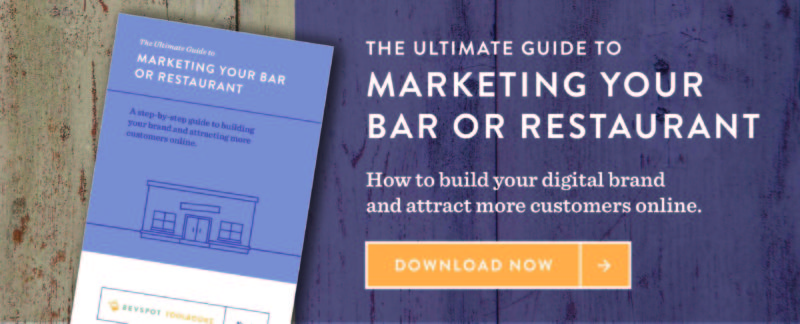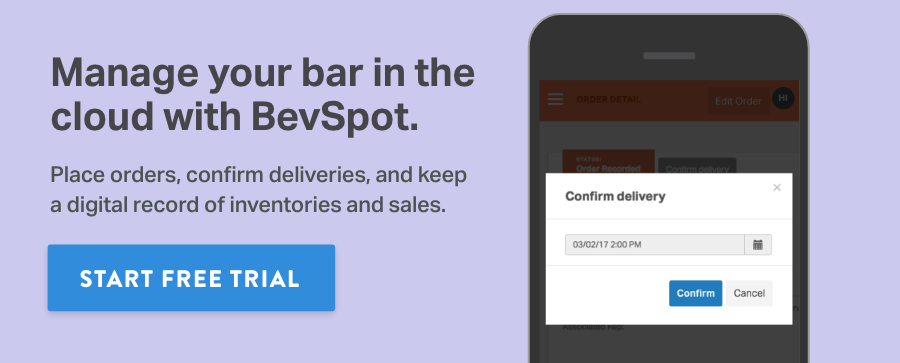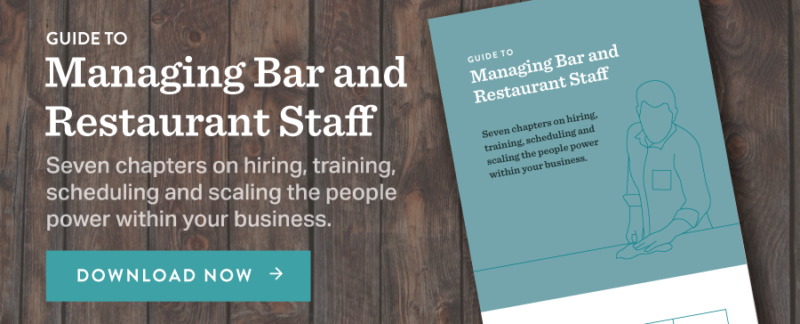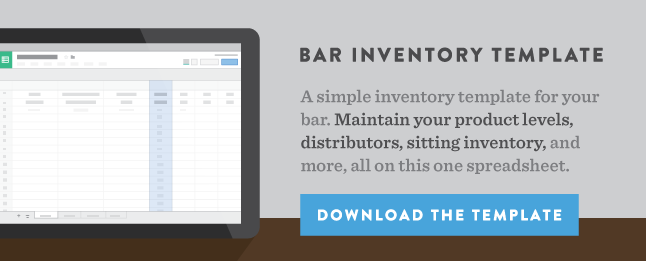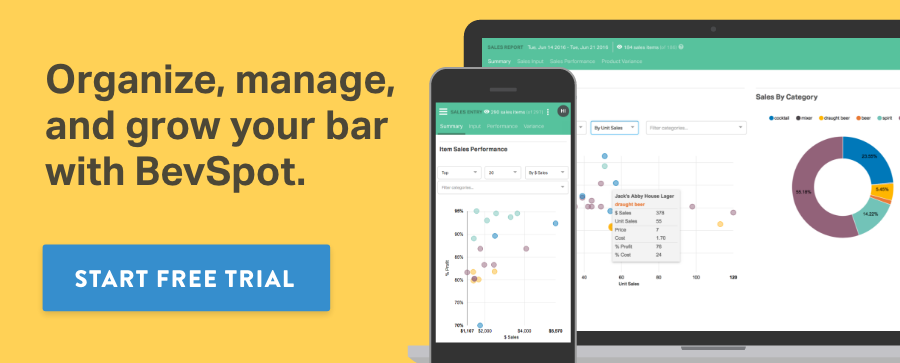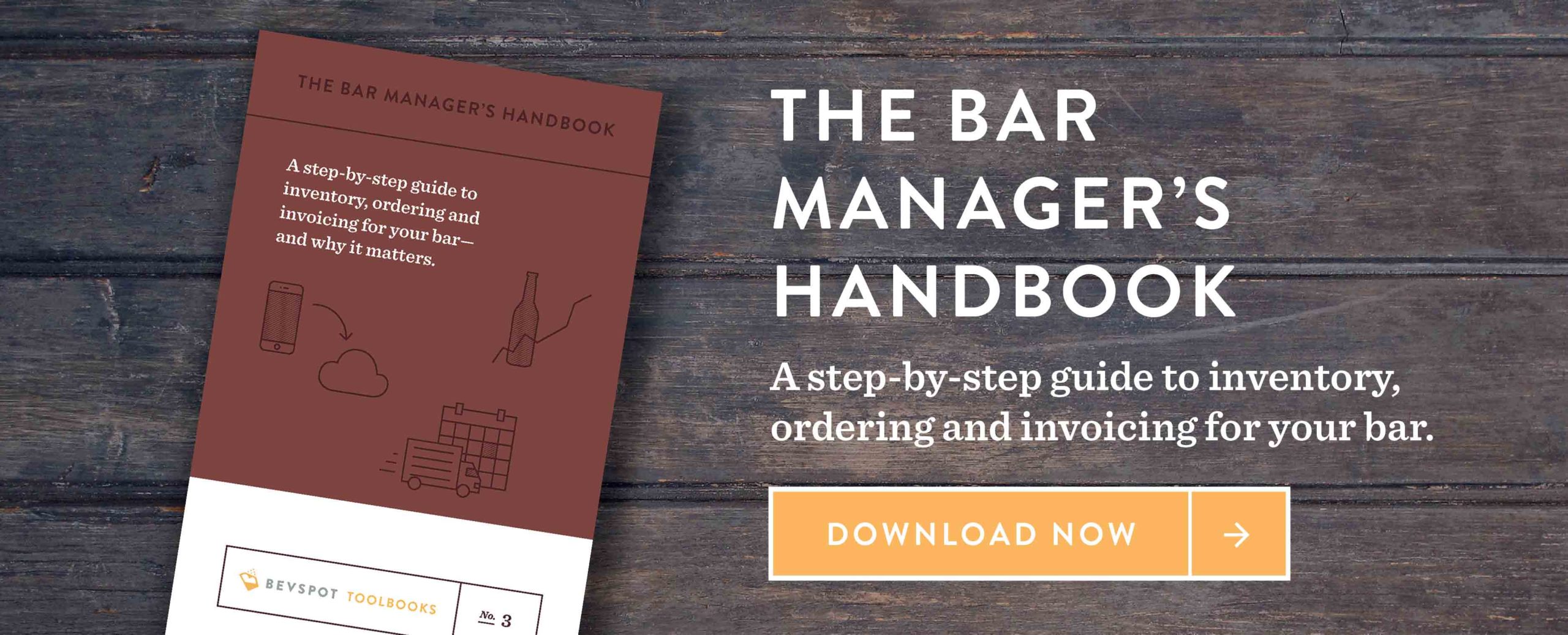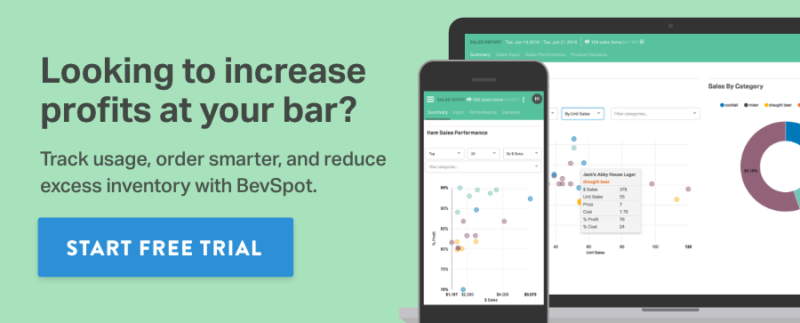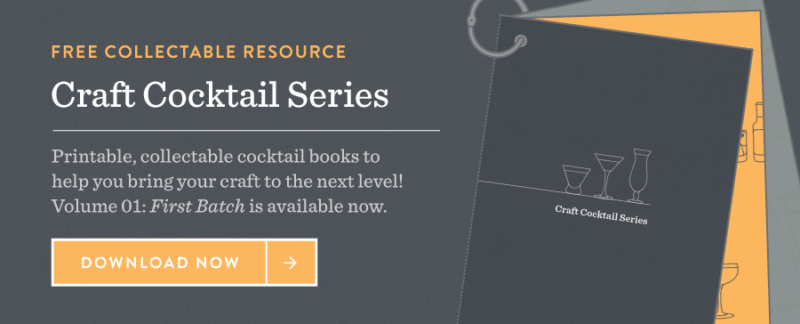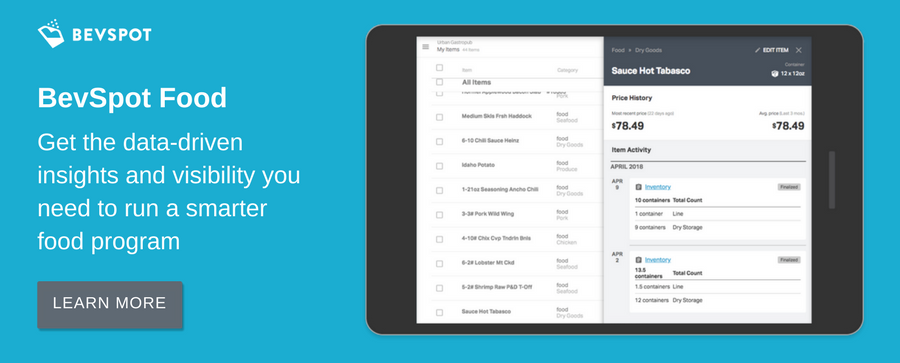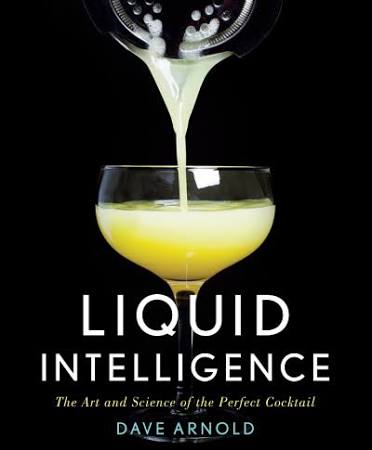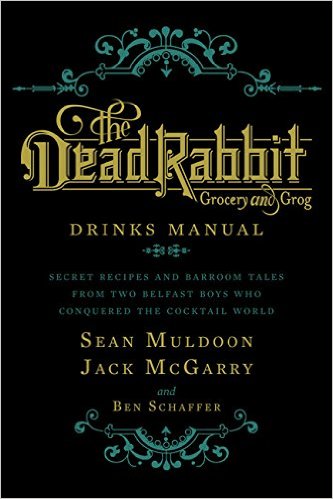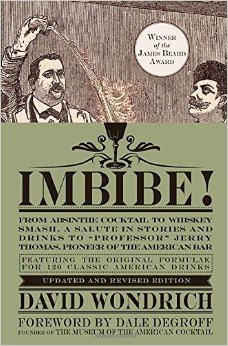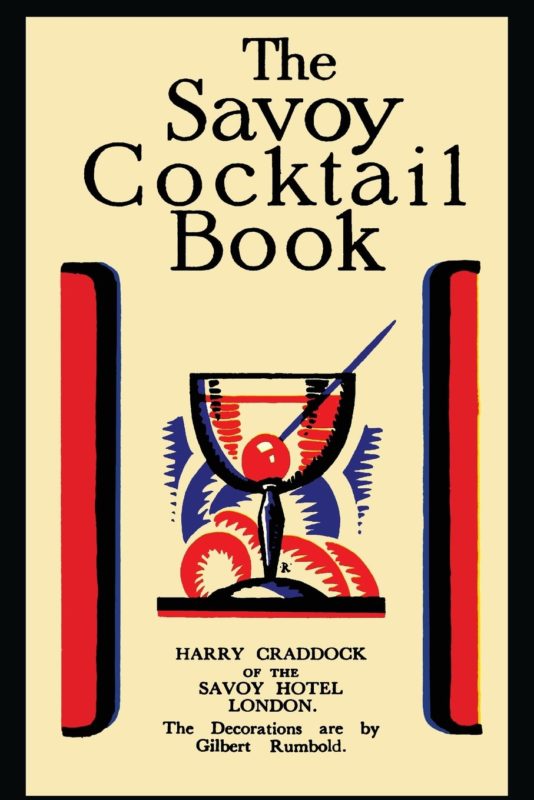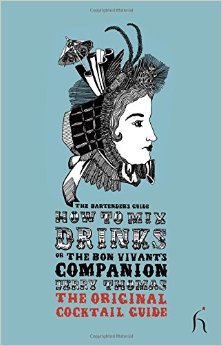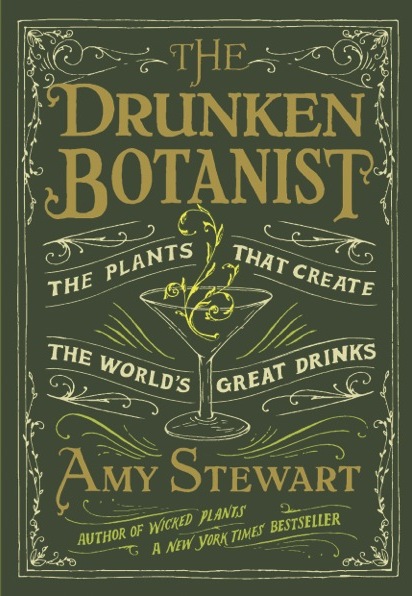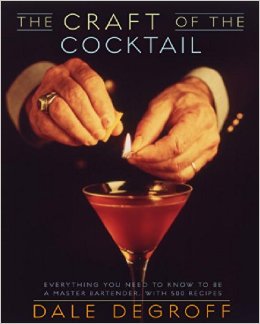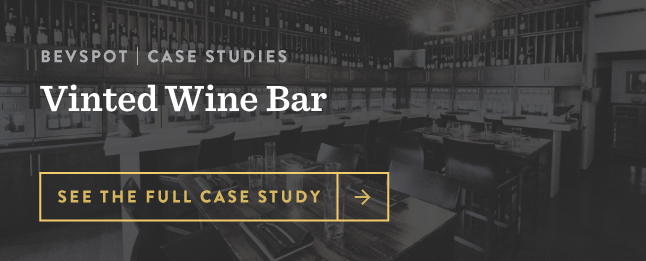Spotlight: Behind the Bar at Boston’s Trade with Tenzin Samdo
Just beyond the hustle and bustle of Boston’s Downtown Crossing and Financial District, you’ll find something rare in the city: open space, greenery, and glistening water. You’ve arrived in Boston’s Seaport District, a booming gem in recent years. This is the area that we at BevSpot are proud to call home, and it’s also home to many of Boston’s newest and trendiest restaurants.
Among these vibrant restaurants, just across from the Greenway on Atlantic Avenue, you’ll find Trade—the large corner restaurant with floor-to-ceiling windows, yellow embellishments, and a patio that can’t be overlooked on a sunny day. Even inside, the light streams through the windows, bringing a bit of the city right up to the bar. It was an absolutely perfect day when I popped in last week to chat with Bar Director Tenzin Samdo, better known to most as @BostonMixDrink.
Being that we’re both heading to Chicago this weekend for the BAR at NRA Show, we had a lot to discuss. We got right down to talking shop:
Favorite cocktail to make?
“It depends on the season, but I always enjoy making tiki drinks because it puts on a good show, and they’re delicious; they really allow bartenders to showcase their character through a fun drink with elaborate garnishes.”
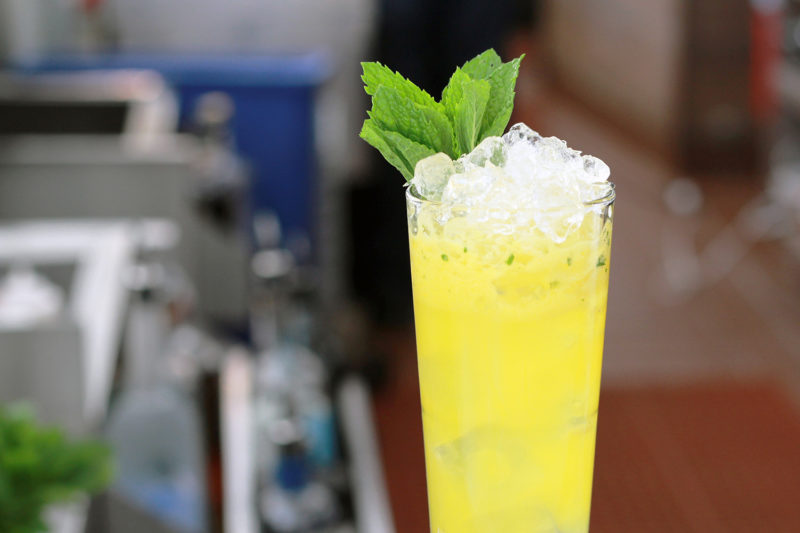
Favorite cocktail to drink?
While Tenzin can’t resist a quality-made Negroni or Sazerac, his go-to is usually a beer.
“Notch Brewing’s Session is my favorite right now…there are certain bars that I go to frequently, and before I even sit down, there will be one in front of me.”
Must-have bar tool?
For someone who uses incredibly elaborate and creative garnishes, a high quality garnish knife is a necessity for Tenzin, but this question hits home as he grabs his personal favorite bar tool—his own personalized, hand-blown mixing glass, “I always scare my team because things break a lot around here, and I always say ‘you guys can break anything, but not this one. This is one of my most prized possessions.’” As he shows me the letters ‘BMD’ etched onto the glass, I know there’s a story here…
“Stirred cocktails will always be around, so it’s nice to have your own personalized mixing glass. Mine says BMD for Boston Mix Drink. I got this through a Highland Park sponsored project when they picked 12 bartenders in the city for a glass blowing seminar. We were all educated on single malt scotch and then initiated into a scotch society. All of us have rings to show we’re part of it!”
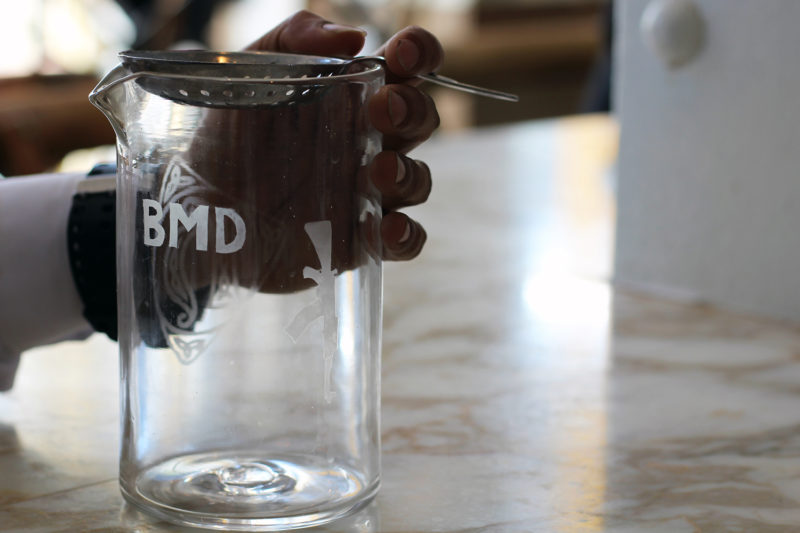
Favorite behind-the-bar story?
As they say, your bartender can often times tell more about your relationship than you can, and Tenzin himself has been responsible for quite a few “hook-ups” amongst his guests. His favorite story is of a female regular who used to come into Trade about twice a week, “we would always chat and she was just really great, so one day I introduced her to another one of my regulars and they started talking quite a bit. A few months later, they came back in…and she had a ring on!”
:::hearts melting:::
Tenzin takes pride in really getting to know his regulars, and it’s a mutual connection: “when you open up about yourself, your guests do, too, and you create this bond.”
All-time favorite food/drink pairing?
“A really, really good Rye Sazerac with a heavy, fatty rigatoni—lots of carbs, skip the apps and dessert.”
Tell me about your personal journey. What led you to bartending?
Being behind the bar for at least 16 years at various establishments around Boston, for Tenzin, it was always about getting things done. Originally just a way of making money, it has grown into so much more.
“At this point, this is my passion. No matter where my future takes me, you will always see me behind the bar in some way.”
A big turning point came about 4 years ago when Tenzin began focusing on the real craft of making drinks, using the freshest ingredients, not just opening something from a package, and focusing on really creating things: “I kept going back to a classic again and recreating a spin on it…. people really started to appreciate it much more.”
How do you keep a fresh spin on what you offer?
As the smell of fresh basil fills the air in the restaurant, Tenzin tells me that Trade’s entire menu is inspired by local vendors. Even every garnish is local, “as a bar program, we go along with that,” says Tenzin, who creates every cocktail ingredient from scratch.
One example? Right around the fall season last year, Trade debuted a salmon dish with a local cranberry chutney. Tenzin took the compote from that chutney, made a syrup, and created a drink inspired by that very dish.
But Tenzin’s inspiration stems far beyond the food offerings at Trade, “I take inspiration from everything I see,” he explains, saying that sometimes he even wakes up in the middle of the night to jot down a recipe that came to him in a dream.
“Fantasizing is the greatest thing. You can think about a vodka soda, but you fantasize about something much crazier.”
What is your biggest piece of advice for aspiring bar directors?
“It’s ok to play dumb. Listen and learn and say, ‘I don’t know.’”
For Tenzin, staying humble is incredibly important. As @BostonMixDrink on Instagram, he has over 12,000 followers, all admiring his beautifully creative concoctions. He’s been featured in top publications from Zagat to Thrillist, competing in and winning cocktail competitions, but you would never know. “When you stay humble, there are always people who can teach you. My mom used to say, ‘you can learn something even from a snail crossing the road.’”
Any books or other resources you would recommend to aspiring bar directors?
“Death and Co is the best cocktail book ever published!” he says, grabbing his trusty copy from behind the bar to show me, “it’s a bar bible.”
What would you say is the biggest lesson you’ve learned in this role?
“You have to have passion and love what you’re doing.”
Tenzin’s sentiment is that no matter what profession you’re in, you have to constantly do your research and strive to be better every single day. It is this emotion that allows Tenzin to enjoy every day he spends behind the bar, constantly pouring humor and elegance into every cocktail he makes.
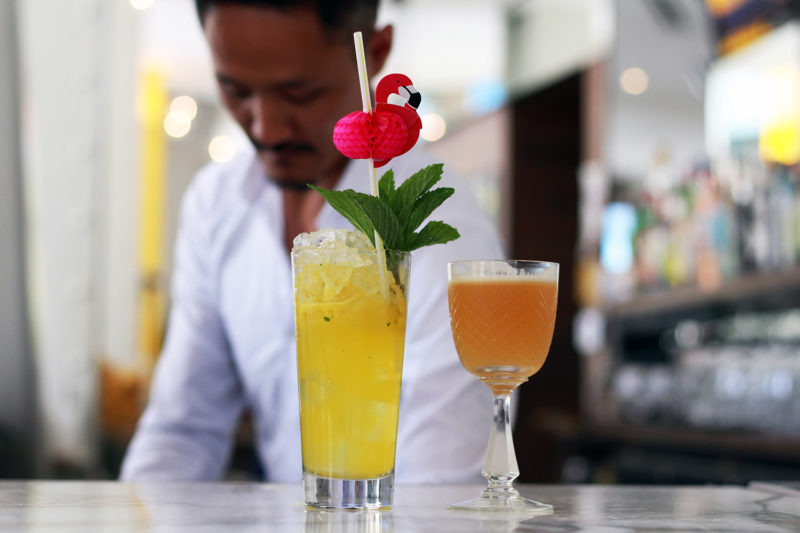
We’re extremely excited to be exhibiting at the BAR at NRA Show in Chicago this weekend. One thing we’re looking forward to? Seeing Tenzin compete in the Star of the Bar Mixology Competition, where six mixologists from across the country will compete for the title.
While sipping a couple of Tenzin’s delicious creations, we chatted about Chicago and mixology competitions:
On Chicago and cocktail competitions:
Although he used to participate in a lot more competitions when he was younger, he now does a few every now and then to promote his own brand, Boston Mix Drink, “I feel blessed to usually be selected when I submit my recipes.”
For Star of the Bar’s Boston competition, Tenzin was not informed that he was selected until the night before he had to compete on stage. The very next day, he was up against two other Boston mixologists, vying for a spot on the Chicago stage.
“It’s a huge honor to represent this city.”
On the cocktail:
This year, the Star of the Bar competition is sponsored by Jägermeister, so his creation had to feature the German liqueur.
His winning cocktail in Boston, titled “56 Secret Admirers” for Jägermeister’s 56 ingredients, features a mix of Jägermeister, mezcal, ginger beer, bitters, and a candied ginger garnish. The result is a smoky and refreshing cocktail, with a great balance of herbs and a little spice from the ginger beer.
He’ll be competing with this same recipe in Chicago, though he may need to make a few tweaks in order to batch it out for 300-400 people. Hopefully we’ll get a taste!
Heading to Chicago this weekend? Stop by our booth!
Introducing: Craft Cocktail Book Series
Thirsty for creative craft cocktail ideas? You’ve come to the right place.
We’ve worked with some incredible bartenders to bring you the first volume of our Craft Cocktail Series. Each edition will be jam-packed with hand-crafted drinks, made with unique ingredients and interesting spirits.
We named the first installment of this series First Batch because it includes 16 recipes from three of BevSpot’s early adopters. These bartenders were some of our first customers, and they continue to impress us with their creativity and mixology expertise.
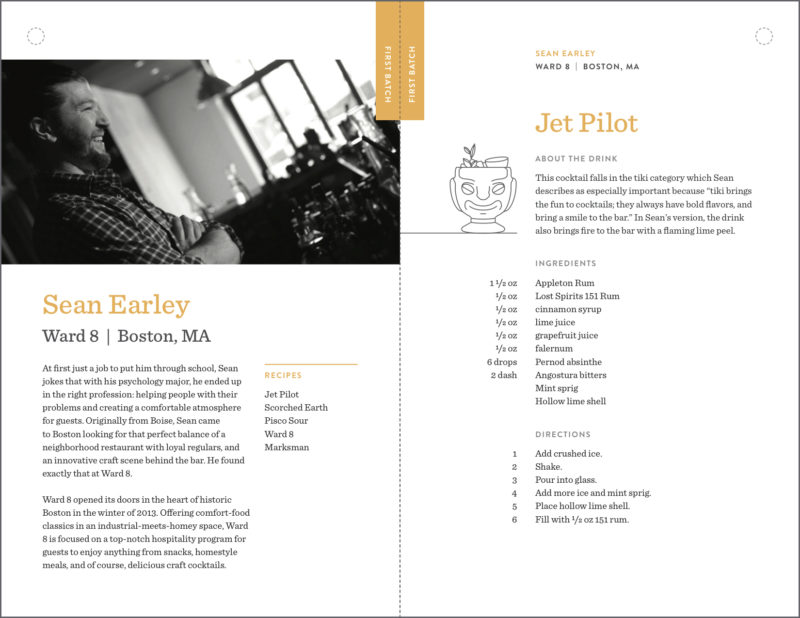
Dig into our new cocktail book to find drinks made with flaming lime peels, earthy and bold flavors, lemongrass-infused genever, egg whites, and a number of other eye-opening components.
A craft cocktail list is an essential part of your business. Collect each volume of our Craft Cocktail Series to help you create a knock-out selection of drinks that offers new flavors, varying presentation styles, and outside-the-box ingredients.
Each book in this series will be available in both a digital and printable format. This way, you can print your book and keep it at your bar or you can easily access it via smartphone, tablet, or computer.
Keep an eye out for the next volume, and collect them all to create the ultimate cocktail recipe book! If you want to see these bartenders in action, check out our Crafting Cocktails videos!
Schedule 15mins to chat with a product specialist
Start a FREE Trial Today! BevSpot offers full product education and account setup for all customers! No card Information needed!
How to Advertise Your Restaurant or Bar Online
Want to advertise your bar or restaurant online?
We’re living in a digital age. Billboard, TV, radio and print advertisements are becoming less and less effective with every passing year. In 2015, $58 billion (yes, with a ‘b’) was spent by businesses, just like yours, on digital advertising. This year, we’ve already seen some impressive online campaigns. So, clearly, 2016 is set to be the year of integrated online advertising initiatives across the restaurant and bar industry.
Yes, you’re doing a great job posting updates to your social media channels, but the reality is this—it’s simply not enough anymore. If you’re not paying for ad placements across the internet machine, you’re limiting your reach and thus limiting your potential revenue.
As the owner (or manager) of a bar or restaurant, you should be making an active effort to advertise online in the places your potential customers frequent daily. Here’s how to advertise your bar or restaurant on five popular websites: Google, Bing, Facebook, Instagram and Twitter.
Advertising on Google Adwords
Google ads can be a highly effective way to advertise your restaurant or bar. The first thing I do when I’m searching for a new restaurant (usually to try for date night) is consult my most informative friend, Google. Google ads work particularly well for restaurants that don’t rank well in Google’s organic search results. Why? Because you can pay to bring your business to the very top of the page.
Google allows users to bid on the keywords that people are searching for. Try bidding on keywords like “restaurants near me,” “best restaurants (insert city),” or “Italian restaurants (insert city).” Bidding on competitors’ brand names can be highly effective, as well. Let’s say a user is searching for Charlie’s Steak House, but the first thing he sees on Google is an ad for Norman’s Steak House, instead. This user’s choice of restaurant is now highly susceptible to influence from your ad. Poaching customers is GOLD. But be careful—sometimes, advertising on a competitor’s brand name will start a bidding war. Why? Because these competitors could start bidding on your restaurant’s name, as well.
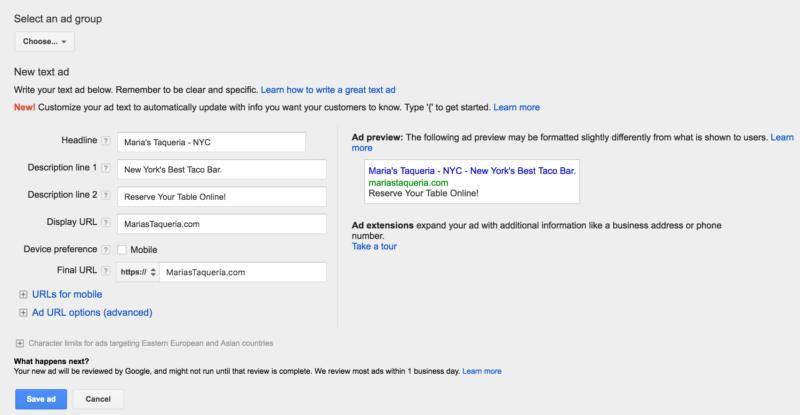
- Be sure to set your location to target the city or town in which you’re located.
- Keep your budgets low while you’re testing.
- Also, steer clear of “broad match” keywords. Broad match keywords allow Google to match your keywords with anything they deem relevant. This can get dangerous, fast. Instead, keep all your keywords on “exact match,” meaning a search has to exactly match the keyword you’re bidding on for your ad to be eligible to show.
Google will charge you on a “pay per click” pricing model. Adwords is a live auction, so your bid on each keyword will determine where you show up on the search page. If you’re not sure where to set your bids, start low (around $1.50). Then, you can adjust them as you see fit. It’s fairly easy to set up these digital advertising techniques for your own bar or restaurant—start by signing up for a Google Adwords account at Adwords.com.
Advertising on Bing
Bing ads are very similar to Google ads in their appearance, setup and execution. Many people search on Bing because it’s the default browser on their computers, mobile devices or tablets. Bing users tend to be a little bit of an older demographic, so if this is your target market, Bing might be a great place to start advertising.
In addition, Bing is generally a less competitive place to advertise. This is because there are less advertisers using Bing compared to Google, so the average “cost per click” tends to be cheaper and click-through rates tend to be higher.
Start out by setting your bids on Bing at 25% lower than a bid you might set on Google for the same keyword.
Set up your Bing ads accounts at ads.bing.com.
Advertising on Facebook and Instagram
Posting regularly on your bar or restaurant’s Facebook page is great, but you can raise the bar (no pun intended) further by paying for your ad to show up in users’ newsfeeds. And here’s a fun fact—the Facebook algorithm has recently changed, so now your organic (regular) posts are not even being shown to all of your followers. To combat this change, you can start paying for spots in users’ newsfeeds. What’s even more appealing, however, is that you can advertise not only to people who have already liked your page, but also to virtually anyone who has a Facebook account.
Facebook is the ultimate advertising tool because: (a) you can slice and dice users virtually any way you want, and (b) only advertise to the buckets you self-create. For instance, I could advertise to males, who live in Boston, are between the ages of 28-40, and who have incomes higher than $100k/year. Furthermore, I can also serve my ads to those who have an interest in French cuisine. Cool, right?

Remember—the more filters you apply to your Facebook ads, the less people who will be eligible to see your ads; the key is finding the sweet spot. Be careful not to drill down your audience to be so limited that only a dozen folks are seeing your ads. Likewise, you shouldn’t target the entire United States in your Facebook ads campaign. You’ll burn through cash quickly, and your ads won’t be showing to the right people.
Instagram ads are run through the Facebook advertising platform, with identical targeting options. In fact, the default setting when you start a Facebook campaign is that Instagram will also be targeted, unless you opt out. I suggest not opting out, as Instagram is a great platform to increase brand awareness for your restaurant. Just make sure to connect your Instagram account to your Facebook page before you start.
For both Facebook and Instagram visuals, try posting pictures of your most aesthetically pleasing dishes. In the text of your ads (there’s a special place dedicated to this, not within the photo itself), be sure to include your restaurant or bar’s name and location. This might seem intuitive, but sometimes people forget!

It’s also advisable to keep text out of the actual photo of your ad. Leave the text for the designated text box that Facebook and Instagram allow advertisers to utilize. The reason for this is because social media ads perform better if they are more seamlessly integrated into social feeds, looking more like an organic post rather than an advertisement. If you don’t decide to take my advice and end up using text in your photo, according to Facebook’s advertising policies, the photo may not include more than 20% of text in the image.
On both Facebook and Instagram, you can also use videos as visuals, which can be very effective. If you do choose to use a video, though, be sure the video can be understood without audio. Most Facebook users do not turn on their volume to watch videos, so whatever script there may be in your ad likely won’t be heard by many people. Also, make sure to include your restaurant’s name and location in the first 10 seconds of the video, in case the user doesn’t watch the entire video.
Facebook and Instagram ads have an automatic bidding feature (which I recommend you take advantage of). Simply set your desired budget, and Facebook will set your bids at a reasonable price, based on your given budget.
To set up a Facebook and Instagram advertising account, go to facebook.com/business/products/ads.
Advertising on Twitter
Twitter ads are used by advertisers to promote their tweets, promote their accounts, and promote trends. In short, Twitter is good for building an audience (your Twitter followers), generating more website traffic, and increasing brand awareness.
Twitter ads are great because, like Facebook, you can get very granular in your targeted audience. To start, try targeting Twitter users in the city or town your bar or restaurant is located in. To get more granular, target people who have an interest in “dining out” or “fine dining.” You can even target users who have an interest in “Cajun and Creole,” “foodie news,” or “liquor and spirits.” Remember, the more granular you get, the smaller you’re making your audience. Being granular is a good thing, unless you’re cutting off valuable traffic. So, be careful not to cut out potential new business.
I recommend using the automatic bidding feature for Twitter, as well. Your bid will be optimized to get the best results at the lowest price within your given budget.
Twitter ad accounts can be set up by visiting ads.twitter.com.

Twitter is also a great platform to launch competitive advertisements. Why? Because you can target the handles (usernames) of your competitors. This means your ad will be eligible to serve to anyone who follows your competitors on Twitter. Let’s say I’m McDonald’s. I could target Burger King’s Twitter followers. Nifty, huh?

There’s only one thing that gets a little tricky with online advertising: The rules change all the time. Most platforms will inform you when they mix things up, but try to keep up to date with the latest online advertising guidelines to stay ahead of any changes to your ads.
This digital world of ours is full of opportunities for getting your bar or restaurant’s name out there—we see more and more each day. But with all this great opportunity and innovation comes increased competition and more room to slip between the cracks if you don’t keep up. So, use these online advertising tips to reach more potential customers and start bringing in more sales.
Are there any online advertising strategies you’ve found successful for your bar or restaurant? Let us know in the comments below!
Schedule 15mins to chat with a product specialist
Start a FREE Trial Today! BevSpot offers full product education and account setup for all customers! No card Information needed!
How to Prevent Theft at Your Bar
How can you prevent problematic employees from committing bar theft?
When you think of a thief, you might picture the classic stereotype of a burglar with a black ski mask and a sack filled with cash. But, in reality, most bar theft is committed by employees. In fact, according to the National Restaurant Association, 75% of inventory shortages are due to employee theft.
Start Your Free Trial With Bevspot Today!
In many cases, they don’t even consider their actions to be stealing. After all, most employees aren’t acting maliciously—they simply don’t realize the severity of their actions. Though some might steal cash and product, most employees are more likely to steal by over-pouring and giving away free drinks – and as a bar manager, it’s important to keep tabs on all forms of theft.
Regardless of the method or the intent, there are measures you can take to reduce product loss and keep costs down at your establishment. Here are 11 ways to prevent theft and waste at your bar.
1. Hire the right people
Hiring great staff members is essential for preventing all forms of theft. An experienced, trustworthy team with glowing reviews will likely pour more accurately, follow bar protocol, and understand how their actions affect the business right from the very beginning.
In order to find the right person for the job, use your best resource—your current, trusted staff. They understand your culture and they know what you’re looking for, plus, they can provide you with a smaller, more screened pool of applicants. If you want to branch out, you can also use job search sites and social media to find proper talent. But no matter how you find potential employees, be sure to perform reference checks to make sure they don’t have a history of theft or misconduct.
2. Create a fulfilling work environment
Your employees will be less likely to steal from you if they feel their work is valuable and they have a positive relationship with you. Create an environment where your staff feels a sense of ownership or equity in their work. Let them pour a certain number of comped drinks a night, ask them to help you create a new drink list, and frequently ask for their opinions. Show that you appreciate their work by taking the time to talk to them, offering rewards or performance bonuses for outstanding work, or hosting out-of-work social activities.
3. Ring up every product
Every now and then, a liquor bottle will slip out of a bar back’s hand or a bartender will give a free drink to a regular. If you require them to ring it up in the POS system, you’ll be able to keep track of spills and comps, helping you distinguish these from actual theft at your bar. It’s also good practice for bartenders to ring up drinks before they begin to pour. This ensures that no drinks go unrecorded or unpaid for.
4. Routinely check bartenders’ tabs
As the bar manager or owner, you can use the admin settings in your POS to check any of your bartenders’ tabs at anytime. It’s a good habit to routinely check your bartenders’ tabs. Not only will it give you a good idea of what’s going on in your business, it’s also a good way to keep track of what’s actually happening at your bar compared to what bartenders are ringing in.
For example, if a bartender’s friend sits at the bar for a few hours, you can check the bartender’s tab after her friend leaves. If the POS report shows your bartender only rang in a shot and a beer, but you also saw her friend drinking a glass of wine and a margarita, you’ll know the bartender gave away drinks without recording them as comps.
Also, make sure you safeguard all POS passwords and keep them safe from your bartenders. You don’t want them using your password to log in and learn their shift sales!
5. Reconcile cash drawers at the end of each night
Although you might not like to think about it, sometimes employees will go out of their way to steal your cash. Surprisingly, a prime hiding spot is actually in the cash drawer itself. To limit this problem, close out the POS right at the end of the shift and remove all the cash drawers. This way, if staff members are hiding a portion of cash in the drawer, they’ll be forced to risk removing it when people are around instead of during the quiet of closing time.
6. Enforce a pour policy
When it comes to establishing a pour policy, there are a number of options to chose from. To reduce over-pouring, you can attach a ball pour spout to your liquor bottles. Made with durable plastic and three ball bearings, these spouts allow for a smoother, more exact pour. You can also opt for computerized pour spouts that distribute a certain amount like ball pour spouts do, but also provide strict inventory control, calculating, and consecutive reporting.
Another option is to use standard pour spouts and require your staff to use jiggers. These small measuring cups help bartenders measure a precise amount of alcohol, helping them craft precise drink recipes and avoid over-pouring. You can also allow the use of free pouring by attaching standard pour spouts and instructing bartenders to pour with a count system.
No matter what policy you choose to enforce, make sure to properly train each new staff member. It’s also important to regularly hold trainings and surprise pour tests to make sure bartenders are pouring accurately on a daily basis.
7. Keep employees’ bags in a designated place
It’s a good idea to keep your staff’s bags and purses in a designated employee area with a closed, locked door and a camera installed. This is smart for two reasons: it prevents employees from stowing stolen product in their bags, and it prevents employees from stealing from each other.
8. Hire secret shoppers
Use secret shopper services like Barfly to find out what takes place when you’re not around. With the help of secret shoppers, you can gain valuable insights into your staff’s activities. Plus, if your bartenders know about their frequent visits, they’ll always be on their best behavior and they’ll be less likely to partake in fraudulent activities.
9. Lock up the extra supply
There’s no reason to leave your storage areas open to the public. Make sure your storage rooms are locked at all times and keys are only issued to bar managers. By securing your sitting inventory, you can keep it safe from breakage or theft. If you chose to install a security system with a code, make sure every employee is given a different code so you know who’s unlocking doors and when.
10. Install security cameras
Although most people don’t have time to watch fourteen hours of security tape a day, installing security cameras is still a good anti-theft option. If you realize there’s significant variance in your bar inventory, security footage can be effective for proving the theft occurred. Also, if employees and guests see cameras, they’ll be less likely to steal products or pocket cash. To ensure this is effective, make sure the cameras are placed in the most important areas—in liquor storage, near the office safe, and facing toward all of the cash registers.
11. Make employees aware of the consequences
Involve your employees in your business. Demonstrate your average pour size, point out variance, explain pour costs, and describe what happens to the bar when you experience loss. Explain that if the bar’s sales suffer and you go out of business, they’ll lose their jobs as well.
Also, let staff know there are controls in place to prevent theft. If they’re aware you’re monitoring them, they’ll be less likely to try something. Let them know stealing results in termination. If one of your employees gets caught stealing, fire them to set the example for your other employees.
Bar theft is a serious problem in the industry. You always need to watch out for over-pouring, stolen cash, snatched products, and drink giveaways. Although it’s impossible to eliminate all forms of loss, with a solid plan in place you can create a strong defense.
It might not be the most glamorous of tasks, but if you don’t take bar inventory, product could be disappearing without your knowledge.
Want to see real-time insights and reports showing exactly where you’re losing product? Schedule a demo with one of BevSpot’s product specialists and we’ll show you.
A Moment With BevSpot’s CEO, Rory Crawford
A trillion-dollar global industry with no great software? It’s time to get on board.
It only took a few hours of working at BevSpot for me to realize it: This company is something truly unique—not only in what we’re providing to the bar and restaurant industry, but the passion behind why we’re doing what we’re doing.
Our CEO and Co-founder, Rory Crawford, sits down with every class of new hires to explain his global vision for BevSpot, where it came from, and what it can provide for the people working their tails off in the food and beverage industry.
It’s too good not to share.
The Lightbulb
The idea for BevSpot first came to Rory when he was working in California on a consumer-focused wine ordering app. He quickly realized there was a larger problem to solve—the entire beverage industry was still being managed completely offline. Inventory was being taken on pen and paper, orders were being placed individually through phone calls or email, and there was absolutely no access to information or data.
Why We’re Here
Rory knew he needed to create a product that could be used by every tier in the beverage supply chain. He sought out to create web-based tools that would allow data to be passed from suppliers to distributors to retailers and, eventually, to consumers. The collection of this data would give more insight into an extremely competitive industry that, at the time, had no way to predict trends like craft beer growing to 15% of the total beer market in a matter of decades.
With this goal in mind, and the objective to create a world-class tech business, Rory connected with MIT students, Chidubem Ezeaka and Alex Lesman (fondly referred to as Cheezy and Lesman), and asked them to join him as co-founders of BevSpot. Together, they set out to improve the daily lives of everyone working in the bar and restaurant industry through data and software.
The Vision
Rory and the BevSpot team don’t just want to make it easier to take inventory and place orders, we want to change the way suppliers, distributors, retailers and consumers communicate and work with one another.
We want the people working in the food and beverage industry to use the data stored within BevSpot to make smarter decisions on a daily basis—including what spirits sell best during specific seasons, days of the week, and even on rainy days.
Industry trends are constantly changing and are almost impossible to stay ahead of. Our goal is to give professionals who work in the business the opportunity to stock their bar with trending, top-selling craft beers that their customers want before their competitors can. And then, to have that sales data be passed back to suppliers to remove the gamble of over or under-producing. Without data, and the chance to execute change based on this data, every business is at risk. “As in any other business, the first to adapt will be the most successful,” Rory says. This is no different for the food and beverage industry, and we’re here to change that.
Want to know how? We’ll show you.
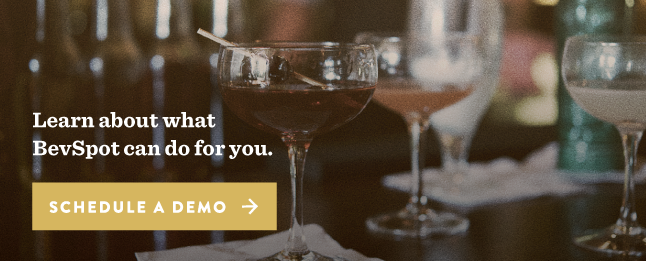
7 of the Most Valuable Bartending Skills
Think about it—what makes a good bartender?
Your role is diverse and fast-paced. You’re constantly talking to customers, crafting cocktails, cutting garnishes, pouring draft beer, handling financial transactions, working late hours, organizing products, and keeping your space clean. There’s a lot going on. In order to to be successful in your role, and to make sure you never miss a step, learn how to master these seven essential bartending skills and become the most valuable asset behind your bar.
1. A sharp memory
Remembering Cocktails
As a bartender, you don’t necessarily need encyclopedic drink knowledge. However, you should remember how to make common cocktails and the drinks featured on your bar’s cocktail list. If you constantly have to ask customers for clarification or look up their requests, you risk wasting time and looking unprofessional.
One of the best ways to improve your memory is to frequently practice making cocktails with the correct tools, glassware, and ingredients. You can also study cocktail books and your bar’s cocktail menu, use flashcards, and create word associations (here’s one: a Kamikaze can be given the association “Very Tragic Landing” to represent its ingredients—vodka, triple sec, and lime).
Recognizing Regulars
It’s also important to remember regular customers. According to the National Restaurant Association’s Operator Survey, regulars make up an average of 75% of sales at family dining restaurants, 70% of sales at casual dining restaurants, and 60% of sales at fine dining restaurants. To create and maintain regular customers, it’s essential to know their names and what they usually like to drink.
An easy tip for remembering customers’ names is to say their name three times—once when they order, again when you ask how their drink is, and a third time when they’re getting ready to leave. You can also associate them with one of your friends or family members who has the same name.
Memorizing Orders
If a customer orders a Whiskey Sour and you hand them a Washington Apple, you’ll likely have to comp their drink and make them a new one. If a group of people rattle off a list of drinks, you should be able to accurately recall and place each person’s order. As a bartender, it’s vital to remember customers’ orders if you want to provide top notch service and use your time efficiently.
To aid in memorization, it’s helpful to repeat each order back to the customer. Not only will this help you remember what they want, it will also confirm you heard the correct drink order.
2. A friendly tone
Throughout your entire interaction with a customer, you’re expected to remain calm, polite, amiable, and collected, even if you’re frustrated, overwhelmed, stressed, exhausted, or dealing with personal problems. It matters how you carry yourself, what facial expressions you make, and what energy you’re giving off.
No doubt, keeping a friendly tone at all hours on the job can be difficult. When you’re constantly showing only those emotions that are appropriate for the job, it can often lead to emotional conflict and burnout. However, with the proper training and time spent on the job, bartenders can further develop this skill. To maintain a friendly vibe, Franky Marshall, a career bartender who got her start at the Monkey Bar and Clover Club, suggests bartenders take breaks, care for themselves, and maintain outside interests.
3. The ability to read people
Different customers require different types of service. If a group of businessmen sit down at the bar during their lunch break, it’s important you get their food in, pay attention to their needs, and get them out quickly. Your service style should also cater to both the group of women casually sipping margaritas and chatting on a Thursday night and the crowd of college bros looking to drink Bud Lites and watch the game.
As a bartender looking to provide excellent service, it’s important to vary your bartending style depending on who sits down in front of you. Learning how to read people takes practice, but after a while behind the bar, you’ll start to pick up on common trends and typical customers.
4. Drink consistency
It’s great if you can craft a high quality cocktail. But, can you make the same cocktail 50 times a night for six shifts a week? Unlike your varying styles of service, your drinks should always be consistent. It’s important that you correctly portion the right amount of ingredients, with no variation in taste, volume, or appearance between drinks.
Not only can inconsistency lead to hit-or-miss cocktails and lower customer satisfaction, it can negatively affect profits. Say there’s a ¼ ounce variance causing you to lose about a dollar a drink. If you sell seven drinks an hour for ten hours a day, you can lose $25,200 a year!
Try BevSpot’s Free Drink Pricing Calculator.
5. Cleanliness
Bartending is about the full customer experience, which means cleanliness is crucial. If your bar is sticky and smells of stale beer, it’s bad for business. Patrons will naturally assume if the front of the house is unsanitary, the back of the house is, too. If that’s not enough incentive, remember that you need to pass regular health inspections to stay in business (our free Health Inspection Checklist can make this easier).
Whenever there’s a break in the action, you should organize your area, wipe down the bar, and clean your bar tools. In order to learn the many ways to properly maintain your workspace, you should attend training, establish a routine, and dig into some helpful reading.
6. Free pouring
If your bar uses the free pouring method, it’s important to master this skill. If your pour is off, you could either be over-pouring and costing your bar hundreds of dollars, or you could be under pouring and short handing customers. To free pour, you need to establish and practice either a three count or four count pour per ounce.
Although this might seem like a straightforward task, don’t expect to get it right the first time. Free pouring takes a great deal of practice and concentration. To perfect this skill, practice free pouring over and over into a long row of shot glasses or a measuring glass. Even when you think you have this skill mastered, it’s important to frequently test yourself to make sure your count remains accurate.
7. Cash handling
Cash handling is extremely important, especially during busy nights. In order to move quickly and properly ring-in every sale, you need to remember drink prices and be quick with counting and calculations. To master your bar’s drink prices, ask to take home a drink list so you can properly memorize the price of each item. If you’re looking to improve the accuracy and speed of your count, you can take out a stack of 100 singles from the bank and practice rifling through them while keeping an exact count.
Cash handling also requires proper communication. If a customer hands you a $20 bill, look back at the guest and say “out of twenty” to confirm this is the amount they handed you. It’s also important to count the customer’s change out loud and in front of him to avoid any discrepancies.
Bartending requires a great deal of skill. You’ve got cocktails to craft, glassware to clean, change to count, and a variety of different customers to handle. Whether you’re just starting out or you’re a bartending vet, you should constantly work to improve your bar technique to impress your manager, bring in tips, and keep customers coming back for more.
Looking for more resources to improve your bartending skills? Subscribe to our blog to receive helpful tips and bartending best practices.
Schedule 15mins to chat with a product specialist
Start a FREE Trial Today! BevSpot offers full product education and account setup for all customers! No card Information needed!
Customer Stories: State Park’s Beverage Program
It could be the fried chicken with that Nashville hot sauce. It could be the classic American dive-bar decor. Or, it could be the beer and cocktail offerings, which please just about anyone who visits this neighborhood favorite.
State Park opened its doors in Cambridge, MA, in December 2013. It’s the sister concept of the now-closed Hungry Mother restaurant, where Head Chef, Barry Maiden won a James Beard award in 2015.
Heather Mojer had worked at Hungry Mother since 2008—starting as a server and working her way up to bartender, manager and then owner—and was one of seven co-owners to launch State Park in 2013. She’s been the Bar Manager there since day one, and, during the last year, she’s taken steps to dramatically improve the way their bar operates.
Since opening State Park, Heather and her team had used a combination of pen and paper and Excel to manage their beverage program. This is a common occurrence in the bar and restaurant world, but it was time consuming, messy, and it created little transparency and cohesion between Heather, her six co-owners, and the bar staff. Something had to be done.
She was using other technology platforms to manage the way State Park operates, so why not use one for her beverage program? Heather implemented BevSpot in early 2015, making her one of the first users of our bar management software. We recently spoke to Heather to find out how her processes have changed over the past year.
“Whether it’s a new menu, or prices, or a product itself, just to have all that information in one place is so useful.”
She’s found a way to save time, save money and better communicate results to her co-owners.
“The time I’ve saved doing inventory is just getting better and better.”
Find out what else she said about running a beverage program with BevSpot. Who knows—it might just be something that could help you out.
How to Design a Successful Drink Menu
Drink menu design is an essential tool for running a profitable beverage program.
It’s one of the first things customers see when they visit your website or when they’re seated at your establishment. Not only can it help you create a positive customer experience, but it can also help you maximize your profitability. When it comes to designing a drink menu, there’s a lot to consider. Whether you’re starting from scratch or revamping your current offerings, here are 11 tips for a creating a successful drink menu.
Start Your Free Trial With Bevspot Today
1. Think about your clientele
Your drink menu should cater to your customers. Are they financial analysts who visit for after-work drinks? College students coming in to sling beers on a Thursday? Lawyers stopping in for their lunch break? It’s important to think about both the drinking occasion and who is doing the drinking.
Before you start, look at the hard data. Run a product mix report from your POS to determine what products sell and which categories deserve more attention. If you discover that 50% of your sales are in spirits, you can probably achieve a lower pour cost in your spirit program, compared to your beer and wine programs. And because your cocktail program is proven to be the most popular category, consider offering a more extensive selection with higher price points. You could also strategically place your best cocktails in menu sweet spots (see number 10).
2. Have a separate drink menu
For most establishments, it’s best to offer a separate beer, wine, and cocktail menu. Having a separate drink menu is more practical and does a better job of showcasing your options than an oversized, crowded menu does. Giant menus are difficult to maneuver, causing customers to accidentally knock over their drinks or have trouble fitting them on the table. Plus, putting too much text on one menu can easily overwhelm your customers and make it difficult for them to choose a drink.
3. Put thought into the number of options you include
When you choose drinks for your menu, think about how many options you want to include. You don’t want to overwhelm customers with too many options, but you also don’t want to limit their choices. Although there’s no established number of drinks to include, it’s generally good to have at least eight to twelve different wine, beer, and cocktail options. Keep in mind, this number can vary depending on a number of factors, such as which alcohol category bars choose to focus on.
If you’re a craft beer establishment like Yard House, it makes sense to offer over 100 beer options. Many customers visit this establishment specifically for their huge selection of beer. Similarly, people expect wine bars like Vinted to have a good number of wine offerings and cocktail bars like Dead Rabbit to have a more extensive cocktail list. It is important to build and successfully control your bar inventory, BevSpot is the perfect way to get started.
4. Keep your menu updated
Be sure to add new offerings and cocktail specials and remove products you no longer carry. If you stock a new local beer but don’t include it on your menu, it’s going to collect dust on your shelves. Also, if you forget to remove menu items you’re out of, your customers will be frustrated when they take the time to choose a wine, only to find out that it’s no longer available.
Also consider seasonality. If you own an establishment in a location that experiences the seasons, think twice before offering spiked hot chocolate in July or frozen margaritas in January. As the seasons change, so should some of your drink menu offerings.
5. Include drink descriptions
Why is it that food items get vivid and embellished descriptions like “slow-roasted,” “succulent,” and “crispy,” but drink listings sometimes don’t even include their ingredients? To help customers make a decision and to upsell certain drinks, include a short but effective description for each item.
Be sure to list each cocktail’s ingredients. Keep in mind, the order of ingredients on a menu can subtly express quantity. When listing drink ingredients, unless there is an eclectic component you want to highlight, list the main spirit first, followed by other spirits or liqueurs. Finally, be sure to mention ingredients with smaller quantities, such as bitters or syrup, toward the end.
If you want to go the extra mile, describe the drink’s flavor, composition, and/or history. To effectively market your drinks, use words that sell, such as “fresh,” “floral,” “savory,” “hand-crafted,” “small-batch,” and “smooth”. But remember, although detailed descriptions can be helpful, over-the-top, lengthy descriptions can appear pretentious and may annoy your customers. It’s important to find a balance between the two.
6. Use creative cocktail names
Cocktail names shouldn’t be an afterthought. According to Scott Baird and Josh Harris, cocktail consultants and partners in The Bon Vivants, “The name accounts for more than half of the reason for selecting a particular cocktail.” Although there is no golden rule for selecting a profitable name, get creative! Think of quotes, puns, literary references, local folklore, seasonal descriptors, etc. Whatever you do, take time to think about it.
7. Strategically format drink prices
First of all, make sure to include the price of your drinks on your menu. According to Mark Vidano, Vice President of Operations at MarkeTeam Inc., a beverage promotions development firm, people are intimidated to order more than one cocktail when the price isn’t listed on the menu.
When it comes to formatting, he says that pricing beers from most expensive to least expensive will usually lead to a more profitable purchase, and different types of wine should differ by at least one dollar to help customers see a distinction.
Another helpful hint—don’t include the dollar sign with the price. Research by Gregg Rapp, owner of Menu Technologies, shows that dollar signs encourage people to focus on the price, often leading them to choose the cheapest option. Instead, just include numbers with decimals. If you want to capitalize on the psychology of numbers, end your prices in .95 instead of .00. According to, Rapp, prices ending in .00 seem “stuffy,” while prices ending in .95 seem “friendlier.”
When you place your prices, it’s also smart to avoid using dotted lines leading from the item to its price. Lines cause the customer to read down and to the right to see what a lower price will get them. Instead, use the nestled pricing solution, where price is carefully positioned after the drink description in the same size font, so customers’ eyes pass over it.
8. Don’t list calories
Although it’s not a bad idea to appeal to the health conscious, listing every drink’s calories can put a damper on a fun, social activity. According to Next Level Marketing, 58% of consumers don’t want to see calories listed next to their cocktails, especially females. Instead, omit calorie counts and simply include a section of lower calorie options.
9. Include drinks’ origins
Since there’s been a rise in local distilleries and breweries across the U.S., it’s a good idea to mention a product’s origin, especially if it’s produced near you. People like to support local businesses, and they may be willing to pay more for handcrafted spirits, beers, and wines.
Also, certain drink items, such as wines, are more valued if they come from certain regions. For example, in a study done by Brian Wansink, Colin Payne, and Jill North, two different groups were presented with the same red wine. However, one group was told the wine was from North Dakota and the other group was told the wine was from California. Even though they were both given a “two-buck chuck,” those who believed the wine was from California rated it more highly.
List the location of a wine, beer, or spirit to add value. You might find people are willing to pay more if they know a wine is from California or a beer is from Germany.
10. Strategically place profitable drinks
Customers tend to look at the top right-hand corner of the menu first. After this spot, peoples’ eyes go to the first and last few items on the menu. To push your most profitable drink items, be sure to strategically place them in these areas to attract the eyes of your customers. The more attention you draw to them, the more likely they are to sell.
11. Visually emphasize high-profit items
To make high-profit items more noticeable, create space around them by placing them in a box or separating them from the other menu options. By putting negative space around an item, you can call more attention to it, making it easier to sell. For a similar effect, you can also make use of large text, graphics, or illustrations.
Be strategic about what menu items you emphasize. The more often you do it, the less impact it will have. Choose only a few drinks per category to ensure the method remains effective.
Once you have figured out your drink menu you can also use BevSpot to help you with your food inventory management.
Schedule 15mins to chat with a product specialist
- BevSpot offers full product education and account setup for all customers! No Card Needed!
5 Traditional Mexican Cocktails for Cinco De Mayo
Mexican Cocktails for Cinco De Mayo
With Cinco de Mayo right around the corner, it’s time to prep your drink menu for la celebración! When your customers think of classic Mexican cocktails, their minds probably jump to the Margarita. Crafted with tequila, triple sec, and lime juice, the Margarita is a staple in Mexican (and American) drinking culture.
Although we love Margaritas, we’ve decided to shine the spotlight on some traditional Mexican cocktails that are lesser-known. Unlike some commercialized drinks, these classic cocktails are commonly consumed below the border. So, get ready for this year’s biggest celebration of our southern neighbor—and one of the best drinking days of the year—and delight your customers with these 5 authentic Mexican bebidas for Cinco de Mayo!
-
-
Michelada
-
Similar to the Bloody Mary, the Michelada is known to lessen the symptoms of a hangover and is typically consumed along with brunch. It falls into the “cervezas preparadas” category, or Mexican beer cocktails.
A combination of beer, clamato or tomato juice, hot sauce, lime, and salt, this drink is a balance of spicy, savory, and sour. Depending on the region, its specific ingredients vary. When additional seasoning or hot sauce is added, some call it a Chelada.
Ingredients (1 serving)
6 ounces beer (Mexican beer of choice)
½ teaspoon Maggi seasoning
½ teaspoon vinegar-based hot sauce
1 lime, juiced
1 cup Clamato
Ice cubes
Preparation
1. Combine all ingredients, except for beer, in a mixing glass
2. Mix thoroughly with a bar spoon
3. Pour into a salt-rimmed glass
4. Add beer
5. Garnish with a lime wedge
-
-
Sangrita
-
Sangrita (meaning, “little blood”) is a traditional non-alcoholic drink used to cleanse the palate between sips of tequila blanco. It originated in the Lake Chapala region that borders the state of Jalisco, Mexico. Before the late 1990s, when tequila began to rise in popularity worldwide, few people outside the region knew of its existence.
Although it’s sometimes mistaken for tomato juice mixed with spices, it was traditionally made with leftover juices from pico de gallo, which usually consisted of cucumber, papaya, mango, tangerine, jicama, and chilli powder.
Nowadays, making and draining pico de gallo is no longer the most efficient method for satisfying customer demand. For this reason, Mexican bartenders have adapted the Sangrita recipe to include more accessible ingredients.
Ingredients (2 servings)
1 ounce freshly squeezed lime juice
½ ounce pomegranate juice
1 ounce freshly squeezed orange juice
2 drops Tabasco sauce or a small dash of ancho chile powder
1 slice jalapeno
Preparation
1. Combine ingredients in shaker with ice
2. Shake
3. Strain into small glass
4. Serve with a shot of blanco tequila**
**To serve a Bandera, a three-shot cocktail inspired by the Mexican flag, also serve with a shot glass filled with lime juice.
-
-
Paloma
-
With the exception of straight tequila shots, the Paloma is the most popular tequila drink in Mexico. Spanish for “dove,” this cocktail is most commonly prepared by mixing tequila with grapefruit juice or grapefruit-flavored soda. Usually, it’s served on the rocks with a lime wedge garnish.
Ingredients (1 serving)
2 oz 100% agave blanco tequila
1 pinch salt
Half a lime
Grapefruit soda (or grapefruit juice and club soda)
Preparation
1. Fill a highball glass with ice
2. Add tequila and salt
3. Squeeze the lime half into the glass and drop in
4. Fill the remainder of the glass with grapefruit soda
5. Stir with a bar spoon
-
-
Horchata
-
The Horchata is originally from Valencia, but Spanish colonists brought it over during Mexican colonization. Unlike the Spanish Horchata, which is made with tigernuts, the Mexican Horchata is made with rice and canela (Mexican cinnamon).
The drink differs region to region, and each household has their favorite way to prepare it. Some Horchatas are thin and watery, and others are creamier from being mixed with milk. Sometimes the rice is soaked, and other times it’s toasted. To mix things up, people also like to include different grains, nuts, and fresh fruits.
Classic Horchata
Ingredients (6 servings)
1 cup white long grain rice
¾ cup blanched almonds
1 three-inch long soft cinnamon stick, broken into pieces
5 cups water
¼ cup sweetened condensed milk
¼ teaspoon vanilla
Ice
Preparation
1. Combine the rice, almonds, cinnamon, and 4 cups hot water and let it sit for at least two hours but preferably overnight
2. Put the mixture in the blender and blend it as smooth as possible
3. Strain
4. Add condensed milk and vanilla
5. Store in fridge until time to serve
Boozy Rum Horchata
Ingredients (1 serving)
⅗ cup Horchata (recipe above)
½ cup unsweetened almond, coconut, or rice milk
2 tablespoons dark rum or Kahlua
Dash of ground cinnamon
Ice cubes
Preparation
1. Add all ingredients to a shaker
2. Shake
3. Pour into glass over ice
4. Garnish with a dash of ground cinnamon
-
-
Mexican Coffee
-
A delicious, warm cocktail that’s typically served at the end of a meal, the Mexican Coffee is traditionally crafted with three core ingredients—Kahlua, Mexican tequila, and coffee.
Kahlua, the famed Mexican coffee and sugar cane spirit, was invented by Senior Blanco, Montalvo Lara and the Alvarez brothers in 1936, and it’s made with premium Arabica coffee beans grown in Veracruz, Mexico. Here’s a typical Mexican Coffee recipe you’d find below the border.
Ingredients (1 serving)
½ ounce silver tequila
½ ounce Kahlua
1 cup strong-brewed coffee
Whipped cream (or ¼ cup melted vanilla ice cream)
Preparation
1. Pour tequila and Kahlua into an Irish coffee mug
2. Fill the rest of the cup with coffee
3. Top with whipped cream or melted vanilla ice cream
Surprise your customers and go beyond the Margarita. With a wide range of traditional offerings, you’ll stand out and make a lasting impression. Kick off the celebration with a comprehensive list of Mexican cocktails. ¡Feliz Cinco de Mayo!
Looking for more cocktail ideas? Check out our Craft Cocktail Series!
Schedule 15mins to chat with a product specialist
Start a FREE Trial Today! BevSpot offers full product education and account setup for all customers! No card Information needed!
8 Cocktail Books Every Bartender Should Read
Cocktail books are a valuable resource for everyone behind the bar.
They show us how to resurrect classic cocktails, use new and innovative ingredients, test unique garnishes, tell bartenders’ stories, suggest useful techniques, and provide a glimpse into the history of cocktail culture.
With thousands of options, choosing what to read might seem daunting. To help you out, our team of bartenders, bar managers, homebrewers, and cocktail enthusiasts has curated a list of our favorites. Here are 8 essential cocktail books for bartenders.
1. Death & Co: Modern Classic Cocktails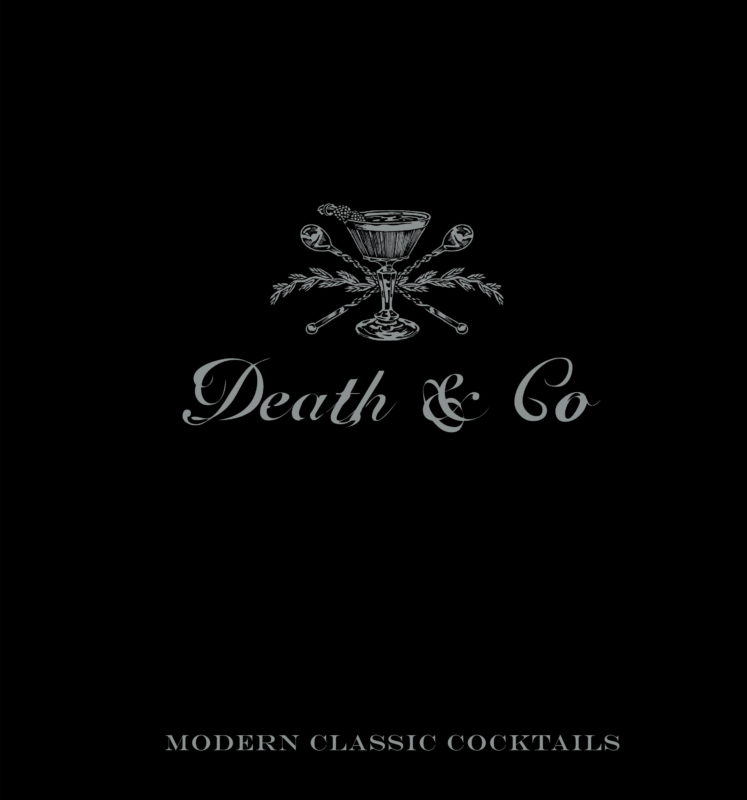
As a bartender, you’ve probably heard of Death & Co. Since opening in Manhattan’s East Village on New Year’s Eve in 2006, they’ve received worldwide recognition and won awards like the Tales of the Cocktail Spirited Awards for Best American Cocktail Bar and World’s Best Cocktail Menu. Their staff is considered to be some of the best in the industry, and they’ve created some of today’s most iconic cocktails like the Naked and Famous, the Conference, and the Oaxaca Old Fashioned (a few of which we made and tasted ourselves).
In October of 2014, David Kaplan, Nick Fauchald, and Alex Day released their book Death & Co: Modern Classic Cocktails. Designed to be the definitive reference on craft cocktails, it includes over 500 ingenious and trendy drinks from behind the bar at Death & Co and discusses the philosophy of drink making. It also gives suggestions for buying and using spirits, and it teaches key bartending techniques.
BevSpot’s Director of Product Management, Chris Zegel, says he’s read Death & Co cover-to-cover, several times. Needless to say, he highly recommends it.
“It’s much more of a recipe book with some history on cocktail revival thrown in.”
“They have their own recipes for the classics and they explain where those were sourced/adapted from, along with all of their signature drinks, broken out by primary spirit and type (generally shaken/stirred for each category). With this organization, it’s really easy to say, ‘Hmm, I want a stirred gin drink tonight’ and pull out the book to find something.”
“As far as recipes go, there are a good number of drinks you can assemble without hunting down too many weird ingredients, minus some of the rums (I just don’t keep eight different kinds of rum at home… even though I probably should, given how many great tiki recipes I’m seeing lately). I also enjoy how the authors note each drink’s origin and credit each recipe to a certain bartender. Since the book lists the names of the bartenders, I’ve been able to follow them as they’ve gone on to other projects and to open new places.”
“I’ll end with a funny story: After I absorbed the whole book, I showed up at Death & Co one night after taking the train to New York City for a day of business meetings. I proceeded to order a Negroni and, dead sober, immediately spilled it directly into the ice bucket. I almost walked right back out of there in shame, but they were super cool about it.”
2. Liquid Intelligence: The Art and Science of the Perfect Cocktail
In Dave Arnold’s world, it’s all about the details. The shape of the ice cube, the bubbles in champagne, and the sugars and acids in an apple are carefully measured, tested, and teased. At Booker & Dax, New York City’s high-tech bar, Arnold and his team dive into carbonation, acidity, sugar concentration, and temperature to find ways to advance classic cocktails and design new ones. In his book, Liquid Intelligence: The Art and Science of the Perfect Cocktail, Arnold pushes readers to change their expectations about what a drink should look and taste like.
The book features 120 recipes, but it’s primarily a technique book that focuses on applying principles of science to the art of mixing drinks. Arnold expands the boundaries of traditional craft with chapters that focus on applications of a centrifuge, liquid nitrogen, and gellan washing. You can easily find yourself spending two hours reading about ice (and loving every minute of it) or deeply involved in the process of clarifying cloudy lime juice with enzymes. In addition to this cutting edge scientific approach, Arnold offers practical tips for tasks, such as making your own soda and preparing cocktails by the pitcher.
3. The Dead Rabbit Drinks Manual
Last year, the critically acclaimed bar, The Dead Rabbit Grocery & Grog, released its first cocktail book and the world stood still. Well, not really, but people were pretty damn excited.
Even if you haven’t had the chance to visit, the name probably sounds familiar. In just the past year alone, The Dead Rabbit was awarded the World’s Best Bar and World’s Best Cocktail Menu by the Tales of the Cocktail Spirited Awards. The book, written by Sean Muldoon, Jack McGarry, and Ben Schaffer, offers historic and innovative drink recipes, has an entire chapter on absinthe, and includes recipes for large-batch punches. It also captivates its readers with the inspiring story of Dead Rabbit’s Founder, Sean Muldoon, and Bar Manager, Jack McGarry that started in Ireland and lead them to the peak of the cocktail world.
If you’re looking to experiment with modern takes on historical drinks, you won’t be able to put this one down. By the time you’re done, post-it notes will be sticking out of various pages, marking the drinks you can’t wait to make. We’ve already reviewed some of their best creations.
4. Imbibe!
Like a good drink? Like American history? Imbibe! should be right up your alley. This spirited, historical, and clear-cut guide to American cocktails includes the recipes and origins of hundreds of essential 19th century American drinks. The book’s author, David Wondrich, also pays tribute to Jerry Thomas, the first “celebrity” bartender, and reveals never-before-published specifics and stories of his life. If you appreciate the ageless appeal of a well-made cocktail and the unique American history behind it, this book is a must-read.
One of BevSpot’s Customer Success Managers, Trevor Driscoll, has a passion for mixing up cocktails at home. He’s read plenty of cocktail books, but he considers Imbibe! to be one of the best.
“Imbibe! is more than a book with drink recipes, it’s a gateway into the history behind them.”
“David Wondrich’s cocktail knowledge is head and shoulders above anyone else, and it shows. This book will help you piece together the stories behind all the drinks you already love, while at the same time give you a firm foundation to stand on when discovering new ones.”
5. The Savoy Cocktail Book
The Savoy Hotel, located in the center of London, opened in 1889. It was the first luxury hotel in Britain, with electric lights, electric lifts, hot and cold running water, and bathrooms in most of the lavishly furnished rooms. Today, it’s still considered London’s most famous hotel.
Well-known bartender, Harry Craddock of The Savoy Hotel, first published his cocktail book in 1930. Craddock was born in England and moved to the United States when he was a young man. He worked in Cleveland and Chicago before moving to New York City to serve drinks at a number of famous bars, including Holland House and Knickerbocker. When Prohibition hit, Craddock, like many American bartenders, left for Europe. Once he landed in London, he went back to bartending, and in 1925 he became the head bartender at The American Bar at The Savoy Hotel. Before Craddock’s arrival, the American style of mixology wasn’t prominent in London. But, after his start at the American Bar, he quickly became famous for his unique style.
Since its creation, The Savoy Cocktail Book has been reprinted five times, and in 1999 was expanded to include some of The Savoy Hotel’s more recent cocktails. It includes over 750 recipes and covers cocktail creation, presentation, and consumption. It’s a great resource if you’re looking to recreate historic cocktails and revive the elegant style of the times.
6. How to Mix Drinks or The Bon Vivant’s Companion: The Original Cocktail Guide
Published in 1862, this book was the first ever cocktail book published in the United States. Jerry Thomas, who is considered “the father of American mixology,” lists standard cocktail recipes like sours, highballs, and fizzes. He also includes his own concoctions like his trademark drink, The Blue Blazer. Along with drink recipes, Thomas gives instructions on using a variety of bar tools. As a bartender, this classic is a must-read. Not only is it informative, it marks the tipping point where cocktail recipes transitioned from oral tradition to written recipes.
7. The Drunken Botanist
Do you know what plant bourbon originates from? What about sake? In a fascinating mixture of history, biology, chemistry, and mixology, Amy Stewart explores the plant origins of alcohol. Her book takes you through the flowers, trees, fruits, herbs, and fungi that humans have converted into alcohol over the centuries. You might know where some alcohol derives from, but in the pages of Stewart’s book, you’re bound to discover some curious, obscure, and even ancient plants that you never knew could be distilled and fermented into alcohol. With over fifty recipes and tips for gardeners looking to grow their own ingredients, this book will significantly expand your alcohol knowledge.
BevSpot’s Director of Marketing, Chris Kiertz, keeps a copy of The Drunken Botanist on his desk.
“Before I read The Drunken Botanist, I loved cocktails. I still love cocktails, but now my cocktails have context.”
“It’s like that botany class I never paid attention to…except it’s about booze. I used to cower in fear when I looked at a drink menu. But now, I’m having conversations with the bartender about the relationship between cochineal insect dye and Campari.”
“In all seriousness, The Drunken Botanist is an essential resource for those trying to up the ante on their beverage knowledge. Personally, I’m fascinated by the fact that everything we drink in some way derives from plants, and I’ve learned a new appreciation for these complex processes. I, for one, will never take my cocktails for granted again!”
8. The Craft of the Cocktail
This book is essentially a cookbook for cocktails. It includes 500 recipes, including both classics and unique originals. In addition to being a great resource for cocktails, the book’s author, Dale DeGroff—who is acknowledged as the world’s premier mixologist—shares information that he uses in his bartending training seminars. In addition to making distinctions between bourbon, rye, Irish and Tennessee whiskey, the book includes rich anecdotes from DeGroff’s many years behind the bar, drink history, and practical tips and techniques for using tools correctly and setting up and stocking the bar. Whether you’re a professional bartender or a novice, this book is must-read.
Cocktail books teach us new techniques, explain how to get the most out of ingredients, tell the history of alcohol and drinking culture, and provide recipes for both new and classic cocktails. We hope our list provides you with some solid reading suggestions!
Want to see some more visual cocktail recipes? Head to our crafting cocktails page.
Schedule 15mins to chat with a product specialist
Start a FREE Trial Today! BevSpot offers full product education and account setup for all customers! No card Information needed!
11 Proven Tips to Control Your Beverage Costs
Control Your Beverage Costs
Controlling your expenses is essential if you want to run a profitable bar. If you blindly price your drinks, lose track of sitting inventory, make inaccurate estimates of how much product to order, fail to create and enforce pour policies, or make other managerial mistakes, your costs will rise, and your profits will plummet.
As a bar manager, this may seem discouraging. But, by making some simple changes, you can effectively control your liquor costs and run a successful establishment. Here are 11 proven tips for lowering your beverage costs.
Start Your Free Trial With Bevspot Today!
1. Use pars
Pars represent the minimum amount of product a bar wants to keep in stock at all times. Accurate par setting ensures you’re not purchasing excess product or sitting on too much inventory. It can also immediately tell you when a certain item needs to be reordered. Due to seasonality and changing customer preferences, pars should be updated at least twice a year. For more accuracy, you should consider updating them quarterly, or even monthly.
2. Carefully price your drinks
In the bar business, the majority of your revenue (usually about 80%) comes from drink sales. When you price your drinks, think about competition and profitability. If your drinks are too expensive, you’ll drive away customers. If your drinks are too cheap, you’ll go out of business.
To price drinks, calculate your current beverage cost and compare it to the industry standard of 25-30%. Is your average beverage cost close to this number? Keep in mind, your establishment will likely see a variation in beverage cost across products, due to your location, client base, and client preference. You should also consider factoring in variance (lost product or shrinkage) into your pricing in order to have a cushion. With industry average shrinkage rates at 25-30%, you should really aim to bring your beverage costs to an average of 16.67%.
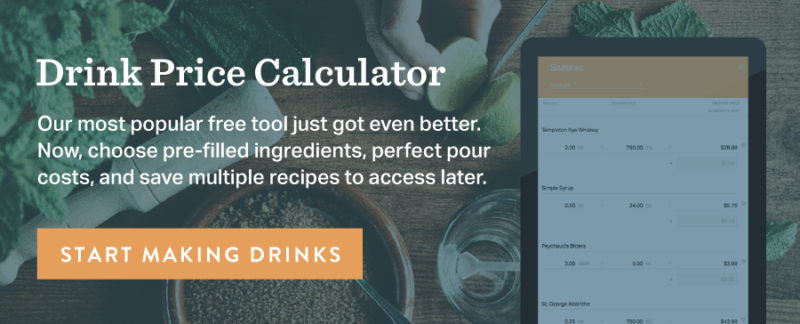
3. Establish pour policies
Overpouring is a quick way to drive up your beverage costs. If your bartenders are frequently topping off customers’ drinks with extra product, you’re giving product away for free. In order to prevent overpouring, establish a set pour policy. Owners and managers have long argued over which method is better—using jiggers or free pouring. Regardless of what method you choose, make sure you have an ongoing training and review process to ensure your staff is pouring accurately.
If you’d rather eliminate the guesswork, require your staff to use jiggers. Not only will this make your cocktails consistent, it will ensure bartenders aren’t overpouring and driving up your costs. If you’d rather have your staff use the free-pour method, make sure to teach them the proper techniques and perform routine checks to assess their accuracy. Another way to limit the possibility of overpouring is requiring the use of precision pour spouts. These specialized three-ball spouts are designed to pour a specific amount. In the U.S., they’re available in twelve different shot sizes.
4. Record spills and complimentary drinks
Spills and comped drinks increase your beverage costs. Generally, you can’t prevent these events from happening. Drinks will inevitably spill, and staff members will give the occasional free drink to loyal customers.
Instead of letting these acts go unrecorded, take note of spills to keep track of what percentage of product loss it attributes. This will also allow for future training opportunities. Likewise, keep a log of complementary drinks, or require staff to note them in the POS. To control your costs, give each staff member a limit of how many drinks he or she can comp, and keep track of the total amount spent on free drinks each month. This way, you can see when your free drink spend is getting too high and take steps to reduce it.
5. Take weekly inventory
Your inventory is your largest asset. It represents an investment of your business’s cash, and it can’t be used for other outflow purposes. If you’re buying things without keeping track, you’re not going to have a very good understanding of where your inventory dollars are going.
Remember, every dollar you spend on inventory is a dollar you can’t put towards other costs. You need to keep track of how much and what variety of product you have, so you don’t overstock or understock your shelves, and you do purchase product that sells.
Taking inventory will also help inform you of product loss so you can take steps to stop the problem from reoccurring. For example, if, after counting, you realize you’re missing an entire bottle of Grey Goose, you can take action to see what may have happened and prevent a loss like this from happening in the future.
6. Set up security cameras
In order to protect both people and assets, such as product, consider installing security cameras. People, both customers and staff, are less likely to steal product if they see a camera is watching. Security cameras will also provide you with insight, which will allow you to quickly terminate staff members who are caught stealing so you won’t continue to lose product. They’ll also help you discover weak spots in your bar’s security, such as areas of the bar that are prone to customer theft.
7. Lock up liquor and only give managers the key
As mentioned before, inventory is your largest asset. It represents a huge investment of your establishment’s cash and, therefore, needs to be protected. Glass bottles—particularly ones containing wine or liquor—can be stolen, broken, and spilled. This method might be a little extreme, but in order to limit the amount of risk, some bar managers lock up storage rooms hosting the bulk of their product. By providing only managers with the key, you’ll be able to keep tabs on who has access to your product, thus reducing the possibility of product loss.
8. Buy a quality draft system and keep it clean
An out-of-balance draft system can sometimes create too much foam or too little foam. If there’s excess foam, you’ll have to pour a good amount of beer down the drain. If there’s not enough foam, too much beer is poured into the glass. Either way, it’s a waste and a loss of profit.
Faulty or dirty draft lines can also make beer cloudy, moldy, and off-tasting. This can be very off-putting for customers and, in rare cases, it can even cause them to be ill. Either way, serving a customer a tainted beer will cost you. You’ll have to appease your customers with a free drink replacement, you may lose repeat business from them, and, in the worst case, they’ll tell others about their negative experience and significantly cut into your business. In order to keep your costs down, make sure you invest in a quality draft system and take the steps to properly maintain it.
9. Buy in bulk to avoid breakage costs
If you know you’re going to use product in two to three weeks, order it in bulk. Distributors want to sell more, and they don’t want to break up cases. To incentivize you to order more product, they offer buy-in-bulk deals and specials. In most cases, buying in bulk is the best way to keep your costs down. The less you pay for your product, the lower your beverage cost percentage will be. However, when it comes to more expensive products that don’t fly off the shelves, buying in bulk might not be the best option because it can tie up your costs.
10. Make sure your invoices reflect your orders
Whenever you receive a delivery, comb through the invoice while the delivery person is still present. It’s important to make sure you’ve received all of the product you ordered. It’s also important to check that you didn’t receive extra product you didn’t order.
You don’t want to pay for products that weren’t delivered. If you sign the invoice without checking the delivery, you might be charged for missing products. If you review the delivery and realize there is a product missing, make a note on the invoice that it wasn’t received.
In the same sense, you don’t want to pay for products you didn’t order and don’t necessarily need. Having extra product on your shelves can tie up your costs, leaving you with less cash flow to put toward other expenses like payroll and rent.
11. Hire trustworthy staff
When you hire your staff, don’t hire just anyone. Your staff runs your day-to-day operations, and they’re surrounded by breakable, spillable, stealable products. In fact, according to loss prevention professionals and operations managers, 20-25% of your losses are due to employee negligence, manipulation, errors, and indifference to policy and procedure. This loss can significantly jack up your beverage costs. Your employees are also the face of your business. If they’re not cordial and they don’t treat your customers with respect, you’ll likely lose business pretty quickly.
Although some product loss is inevitable, you can combat this cost by making sure your hiring process is thorough. If you currently have some trustworthy employees, ask them to make referrals. The referral system is the most cost-effective way to hire new employees. It’s also a faster way to hire, it generally leads to better hires, and it lowers the turnover rate of your establishment. Once you have applicants, have multiple people interview them to see if they have technical ability, but most importantly to make sure they have the personal characteristics of outstanding service providers—extroversion, agreeableness, conscientiousness, respect, and emotional stability.
As a manager, there are plenty of different things to think about when working to keep costs down. Follow these tips to lower your beverage costs and improve your bottom line.
Looking for more help behind the bar? Schedule a call with one of our product specialists to see how BevSpot’s bar management software can help you lower your beverage costs!
Start a FREE Trial Today! BevSpot offers full product education and account setup for all customers! No card Information needed!
Customer Stories: Vinted Wine Bar on Better Bar Management
Vinted Wine Bar and Kitchen opened three years ago, in West Hartford, CT. And there’s a reason why it received such a glowing review in the New York Times.
After opening, Vinted quickly became one of the best wine bars in the state. Why? A menu of modern American small plates, a large cocktail program, and unique wine-preservation technology that allows them to offer their customers over 70 wines by the glass.
Housed in stainless-steel cabinets, Vinted’s argon-oxygen replacement system keeps an opened bottle of wine fresh for up to two months. Here lies Vinted’s distinct concept: Over 70 varieties of wine offered in one-ounce tastes, three-ounce half glasses, and six-ounce full glasses.
As you can imagine, managing such a large beverage program is difficult. Since opening Vinted, Gary Evangelista, the General Manager, had been taking inventory with pen and paper. He needed to improve the efficiency of his inventory and ordering processes, but he also wanted to find an easier way to process the numbers, look at his pour costs, and shape Vinted into a more profitable bar. After seeing BevSpot, he thought, “Why not give it a try?”
But Gary wanted more than just software as a solution. He wanted the people behind the technology to help him grow a real business. BevSpot was the perfect fit.
“Once I realized how much it would help me and allow our owner to put an end to hours of number crunching, it just seemed like a no-brainer.”
Gary signed up to BevSpot just two months ago, so we thought we’d check in and see how he’s using the bar management software.
He’s working with Vinted’s owner to develop better processes that will save him time on inventory and save his owner money.
“I’ve worked for Ralph for over 10 years, and this is the first time I’ve been able to save him and our accountant time—he absolutely loves it.”
It gets better—read the rest of the results in the full case study, below.
How BevSpot Helps to Build Better Bars and Restaurants
Most technology companies are quick to mention how awesome their customer support team is.
And as a new or potential customer, that’s great to hear—it’s important that you have easy-to-reach, helpful resources to turn to if you have any questions. Obviously, we have that at BevSpot, too.
But unfortunately, that’s where the vast majority of companies stop. Their goal, of course, is to help you use their software or application, but often that’s where their focus ends.
We do things a little differently at BevSpot. We’re partners for the industry—our customer success team works with bars and restaurants to help them grow and improve. Each one of our customers has a dedicated resource committed to their success. And not just success in implementing and using BevSpot, but success in running the best possible beverage program.
Helping our customers use BevSpot effectively is part of that, of course. None of us would be pouring our hearts into growing this company if we didn’t believe in the role that data can play in helping the industry run better bars and businesses. But, for us, that’s not where it ends.
As a startup, we’re constantly engaged in creative problem solving and finding innovative ways to grow our business. It turns out this type of problem solving is critical to running effective bars and restaurants, and our Customer Success Managers have experience doing just that.
Across the Customer Success team, we have people with experience running some of the largest beverage programs in Boston. We have certified Sommeliers. We have people with experience launching new restaurant concepts. And we have people with experience helping small businesses use data to improve their operations and marketing efforts.
Here are just some of the ways we use this experience to help our customers take their business to the next level:
- We customize our product offerings to help you with new menu launches
- We analyze insights from your BevSpot data to change menu pricing, develop promotions, or strategically reduce your inventory
- We help you set goals to get your beverage program where it needs to be
- We review your wine and beer lists with one of our in-house experts
- We guide your POS system set up to get the most out of your bar’s data
- We think through challenging business questions like whether or not to buy volume discounts
- And we hold your staff and bartenders accountable and reward your best performing ones
It’s important for us to create a channel of communication between our customers and the product they’re using. So, in the BevSpot office, our Customer Success team sits right next to our Design and Product Development teams, sending them feedback and ideas that come directly from our customers. We use your thoughts to build a product that works for you.
Sure, BevSpot will provide you with a killer web app to help streamline your bar operations and make daily decisions based off of data. But, more importantly, we’ll provide you with a dedicated (and experienced) resource to help your bar succeed. Any bar can have the shiny, new bells and whistles and all the financial resources it needs, but really, its success is a function of the people behind it serving its customers on a daily basis.
At BevSpot, we understand technology is no different. It’s not just about features, user interfaces, or functionality (even though we lose sleep over those things!). At the end of the day, it really comes down to the people behind the technology who are focused on helping the industry. We’re hospitality professionals, too, only we’re here to serve you. That level of support and service, just like any great bar or restaurant, is what sets us apart.
Want to get in touch with our customer success team? Email us. We’d love to chat.
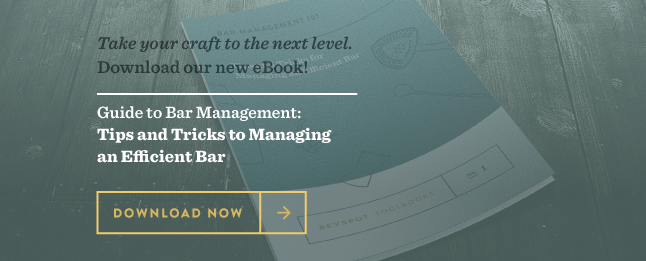
Ice, the Ultimate Cocktail Ingredient
When you think about cocktail ingredients, what comes to mind?
You probably think of liquor, liqueurs, vermouths, bitters, mixers, syrups, and garnishes. Your mind might default to the combination of bourbon, bitters, simple syrup, and orange peel for an Old Fashioned, or the gin, tonic water, and lime wedge you use to craft a Gin and Tonic.
Sure, these are essential cocktail components, but we can’t forget about the most prominent cocktail ingredient. It frequents 95% of cocktails and is, ironically, one of the most overlooked ingredients behind the bar.
Hint: It’s tasteless, clear, and basically free. (And no, it’s not a shot of well vodka).
Ice
With the exception of hot drinks and the interesting room temperature cocktail trend, ice is a core ingredient in every drink. Not only does ice chill a drink to its proper serving temperature (around 37-38˚F), but it’s also an important feature in its presentation. Plus, when ice melts, it helps bind together ingredients, smooth out flavor, and take the bite out of a base spirit.
As a bartender, ice should never be an afterthought. Either create your own, or find a vendor to purchase high quality ice from to complement your cocktails and create a better drinking experience for your customers.
Large vs. Small Ice
When bartenders choose between large and small ice, they should think about how size affects a cocktail’s chilling, presentation, and dilution.
Large Ice
Generally, bartenders choose to use larger pieces of ice when they don’t want a spirit-forward cocktail or straight liquor to become too diluted. Larger pieces of ice have a lower surface-area-to-volume ratio, so they usually melt more slowly. This gives drinkers more time to finish their cocktail before the ice dilutes it. Keep in mind, since ice does not chill unless it also melts, larger ice cubes cool drinks more slowly than smaller ice cubes do.
In addition to their practical use, large pieces of ice are also popular for their unique look. Let’s face it—large-format ice pieces look sexier than your average plastic tray ice cubes. Include different types of large ice in your cocktails to dilute your drinks more slowly and capture the attention of your customers. Here are some common examples of large-format ice:
Rocks Ice
These ice pieces are usually square and tend to be around 2.25-2.5 inches in size. Because they’re bigger than standard mixing ice, they melt slowly and keep the drink cold for a longer period of time. Use this type of ice in a pure spirit, such as a bourbon or a spirit-forward drink like an Old Fashioned. To create rocks ice, use ice molds or cut them by hand. If you wish to buy it, reach out to artisanal ice companies.
Ice Ball
Ice balls, a staple in Japan, are now gaining popularity behind American bars. Because of their circular shape (usually 3 and 5 inches in diameter), they melt more slowly, dilute drinks less, and capture customers’ attention. You can create these spheres yourself by using a special mold or cutting them by hand. Or, if you wish to purchase them, you can order them from an artisan ice company.
Punch Ice or Block Ice
A big batch of punch calls for a big block of ice. Due to its size, punch ice can keep punch cold for a long period of time without watering it down too quickly. Punch ice is also commonly crafted in a donut shape or punch ring, which are only slightly smaller than the punch bowl. Often, these ice rings are decorated and infused with ingredients like citrus fruits.
Collins Spears or Shard Ice
If you’re looking to impress your customers, Collins spears are beautiful, elongated ice blocks specifically designed to fit into a Collins glass. Not only are they attractive, but they also take longer to melt and keep the drink chilled without over-diluting it. You can make these ice cubes with special long ice molds, by modifying silicone ice trays, or by hand-chipping large ice slabs. You can also purchase them from artisan ice companies.
Small Ice
As mentioned before, smaller ice cools and dilutes drinks faster. Because of this, if you’re crafting a highly concentrated drink like a Mint Julep or a Swizzle, you’ll want to use smaller ice to quickly chill the drink and water it down to make it immediately more drinkable.
Drinks like a Gin Martini aren’t served with ice but are stirred or shaken with small ice cubes and then immediately strained into a separate glass. This way, they are rapidly cooled with a small amount of controlled dilution to balance out the spirit.
Mixing Ice Cubes
Mixing cubes are used for stirring and shaking cocktails like the Martini. They’re also used in standard cocktails like a Rum and Coke or a Gin and Tonic. Generally, these ice cubes are a 1 inch square and can be made with a commercial ice machine (such as a Kold-Draft machine), ice molds, or by sectioning your own ice block. They can also be purchased from commercial ice companies.
Crushed or Pebbled Ice
Cocktails such as Rum Swizzles, Mint Juleps, and Tiki drinks call for crushed ice. Because they’re composed of juices and sweeteners, they need to be diluted faster. To make this type of ice, you can use a blender, purchase a crushed-ice maker, or go the old-school route and put ice cubes in a Lewis bag and hit them with a mallet or blunt object.
Cracked Ice
You might want to make a drink with ice that’s smaller than mixing cubes but not as granulated as crushed ice. Cracked ice makes it easier to smoothly mix a drink, and it offers a different presentation style. To make cracked ice, put ice in a Lewis bag and stop hitting it before the ice is totally crushed. You could also take each individual cube and whack it with a spoon until it cracks into smaller pieces.
Taste and Clarity
If you’re planning to make your own ice, make sure you use the right kind of water. If you’re using high quality ingredients to make your cocktails, why would you make your ice cubes with ordinary tap water? Be sure to use pure, filtered water to ensure your final product is of high quality.
If you want to go the extra mile and make your ice cubes crystal clear, use the directional freezing method. Although cloudy ice is perfectly acceptable, clear ice adds a touch of elegance to a drink’s presentation. There are some commercial products that use the directional freezing method, but the simplest way to get this effect is to fill a clean thick-plastic cooler with pure, filtered water and put it in the freezer with the top off. Once the ice is done freezing, only the bottom 25% will be cloudy, so you’ll easily be able to cut this portion off.
As you can see, ice certainly deserves some attention. It affects a drink’s temperature, composition, and presentation. Make sure you carefully create or purchase high quality ice, and include the most appropriate type in each of your cocktails.
For more tips and tricks on cocktail development, check out our crafting cocktails page and subscribe to the blog!
Schedule 15mins to chat with a product specialist
Start a FREE Trial Today! BevSpot offers full product education and account setup for all customers! No card Information needed!
BBJ announces the 2016 Best Places to Work honorees
The Boston Business Journal today announced the 80 honorees for its annual Best Places to Work program.
This year’s employers were divided among five different categories — extra small, small, medium, large and extra large — and were selected based on survey responses provided by employees. The BBJ’s Best Places to Work surveys and the subsequent scoring of responses were provided in partnership with Quantum Workplace…
The Rising Popularity of Bartender Podcasts
We take a look at the growing influence of podcasts as a resource for bartenders.
When we spoke to Brian Weber from Bartender Journey, he was busy mixing cocktails for a new photoshoot. He rattled off a list of ingredients: American brandy, red vermouth, apricot preserve, orange bitters, and some muddled grapes. “Sounds pretty good, right?” he said. Brian is adept in the art of mixology, and we’ve come to discover that every cocktail he makes tastes ‘pretty good’.
We first met Brian when our CEO and Co-Founder, Rory Crawford, was featured on the Bartender Journey podcast discussing the complexities of bar management. Then, we had the chance to meet in person at the Nightclub and Bar Show, in Las Vegas.
Brian started working in the bar and restaurant industry when he was just 14 years old. Since then, he’s worked in this industry in just about every capacity: bartender, chef, beverage director, caterer, restaurant manager, and the list continues. So, combining his love for bartending with his experience in audio production made sense. He’s been producing podcasts every week since 2013, creating valuable content for both professional and aspiring bartenders and cocktail and spirit enthusiasts.
The Bartender Journey podcasts focus on education and an exploration of the industry. He covers basically every aspect of bartending, from craft cocktail recipes and quality spirits to interviews with some of the biggest names in the industry.
So, why are podcasts growing as such a valuable resources for bartenders? Let’s find out.
You’ve interviewed some big names in the bartending world. Any career highlights thus far?
Before starting the Bartender Journey podcast, Brian says, “I didn’t know how much I didn’t know.”
“When I started this, I thought I was a good bartender. But I have totally evolved. I’ve learned so much by attending events and interviewing people for the show, so the ‘Bartender Journey’ podcast is the perfect name—it really has been quite the journey.” The first event Brian ever attended was the Nightclub and Bar Show, in Las Vegas. What a way to get started. “Tales of the Cocktail, in New Orleans, was also a huge event; it taught me so much.”
But the two big highlights of Brian’s career have been interviews with Dale DeGroff and David Wondrich. “I attended the BarSmarts Advanced course, a full-day event that involves exams and mixology tests. And who should be my judge? David Wondrich. I had to make several drinks for him, and if I hadn’t met him prior to that I don’t know what I would have done.”
What do you love most about producing the Bartender Journey podcasts?
“It’s kind of like bartending, or being a chef—it’s partly technical and partly creative,” says Brian. Podcasts are a creative outlet for Brian, but they’re also an educational, informative and fun one. “And that’s what I’ve always tried to do with this podcast—make it educational, useful and valuable for the people who listen to it. And that’s one of the nice things about podcasts: They can be whatever you want them to be, and there are no rules.”
Brian loves podcasts because they’re different to traditional media outlets. “Podcasts are similar to blogging, in that you have complete creative license over your own work. And they’re a great way to meet people who are just as excited about cocktails and bartending as you are.”
So, what’s your favorite cocktail?
“A Negroni or a Manhattan, depending on the day and the weather.”

Why do you think podcasts are growing as a resource for bartenders?
Brian explains how the industry has changed in the last 10 years. “I used to really enjoy audiobooks because they allow you to spend time being productive while you’re learning, and I think it’s the same for podcasts now.” These days, consumers want their learning and entertainment online and on their own time, and everyone has access to on-demand information.”
Brian believes that’s the reason why we’ve seen huge growth in the popularity of podcasts across this industry. “It’s a great way to multi-task; you can consume information as you’re setting up your bar or on your way to or from work.”
What other resources would you recommend bartenders use to enhance their skills and knowledge?
“I read a lot of books, and I often have the opportunity to add review copy to new books because of my podcast.” So, what’s Brian’s favorite bartending book? “Jeffrey Morgenthaler’s The Bar Book. It’s the first one I recommend, always. I love it because it’s all about technique, not just cocktail recipes.”
“However,” Brian explains, “There’s so much information on the Internet these days. Consumers don’t necessarily need to tune-in to or rely on any one tv show, magazine or blog.” He pauses for a moment. “I hope people rely on Bartender Journey, though!”
What do you see for the future of podcasts and similar resources for bartenders?
Brian believes podcasts will continue to grow in popularity throughout the bar industry. “I’m seeing more and more people listening in, but also more people producing them, so there is now more variety for listeners to choose from. Podcasts are just so convenient!”
For Brian, podcasting is an avenue for meeting people, and it’s also a gateway to other industry-related activities, such as events and branded jobs. Along with the Bartender Journey podcast, Brian produces the Tales 365 podcast for Tales of the Cocktail and works full-time. “The beauty of the podcast is that you own it and you can make it fit around your life.”
Do you see any upcoming trends in the bar industry?
Brian believes—as far as the craft cocktail movement goes—smaller markets in the industry are still in catch-up mode. And this is something that’s only going to get better. “It was Philip Duff who told me this: There will be more establishments like The Dead Rabbit, in NYC (which has experienced enormous success), that encapsulate the fancy cocktail bar, the every-day pub, and the special-events bar, all under one roof. Why? Because this is a good way to generate income all day long, rather than running solely a cocktail bar that doesn’t open until 8 p.m.”
Any advice for bartenders who might want to take their skills further by creating something like a podcast?
Whatever you create, Brian suggests making it useful and being considerate of your listeners’ time. “There are some podcasts that go on for an hour and a half, and I come away thinking, ‘Did I actually learn anything?’”
He also advises to try reaching a broad audience with your information, as the people who are listening to or reading your content are trying to learn and may be starting with very little. “It’s easy to reference a famous bar or quote that everyone knows, but I think you have to assume a lot of listeners are in a small market, and maybe they’ve never heard of these things. Treat your listeners or subscribers as you would guests in your bar.”
You have extensive experience in both bartending and bar/restaurant management. Any advice for others?
“The lesson I learned at my most recent management job, as a Food and Beverage Director, is to not let the job take over your life. If you’re not happy, maybe it’s time for a change,” he says. Brian also urges aspiring bar or restaurant managers to respect their staff and recognize them as a huge part of the team. “Staff have direct contact with your guests, so they’re probably even more important than you are. It’s important to respect them.”
“And the great thing is, staff want to keep learning, which is an excellent way to keep them engaged with their job. Ongoing education is a wonderful thing, and it’s a great way to keep employees loyal and make them feel invested in the business.”
Want to listen to Brian’s next podcast? You can find it here: www.bartenderjourney.com
Looking for more articles about the bartending industry? Check out our industry culture page and subscribe to our blog, below!
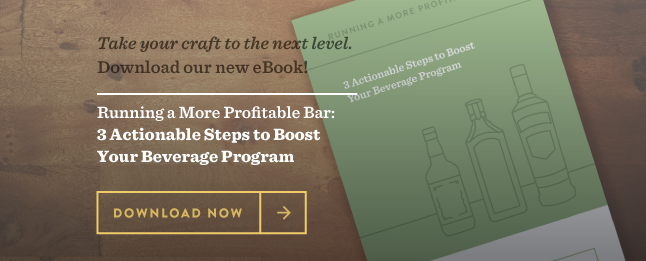
Schedule 15mins to chat with a product specialist
Start a FREE Trial Today! BevSpot offers full product education and account setup for all customers! No card Information needed!
